Events in this story happened on Thursday the 1st of April, 2021. From Fujairah, Jonas and I visited the Omani exclave of Madha for the second time. Then we continued onward and visited the second-order enclave of Nahwa within the Madha exclave. This is how we did it. Click here to find a vital route map and for our tips on how to visit Madha and Nahwa.
Contents
- 1 Why Are Madha and Nahwa Exclaves?
- 2 Trip Planning in Fujairah
- 3 Finding a Taxi and Driving to Madha
- 4 Sightseeing in Madha, Oman
- 5 Driving to the Border of Madha and Nahwa
- 6 Visiting Nahwa, UAE
- 7 The Bad Road between Nahwa, Hamid Hajarbni, and Wadi Shis
- 8 Driving through Wadi Shis to the Shis Park
- 9 Wadi Shis to Bithnah and Back to Fujairah
- 10 Resources + Map of Madha and Nahwa
- 11 Thank you for reading! Consider buying me tap water!
- 12 Feel like sharing? Click the share buttons or pin these images
Why Are Madha and Nahwa Exclaves?
A brief history: back in the olden days, there were many rivaling sheikhdoms in this area. The ruling clans relevant to this story are the Al Qassimi of Ras Al Khaimah, the Al Qassimi of Sharjah, the Al Sharqi of Fujairah, and the Bu Said of Oman. In the 1930s or 1940s, the village elders in this area invited representatives of all four houses. After each representative argued for themselves, they asked the Madhanis whom they’d align themselves with. All the neighboring villages including Nahwa chose one of the houses that would later become part of the UAE. But Madha chose Oman because they believed that government wouldn’t come for its freshwater supply.
Fast forward to 1968 when the British announced they’d pull out of the Trucial States. Over the next years, nation-building in the UAE and surrounding states commenced and the leaders negotiated its borders. Madha’s donut-shaped borders around Nahwa were defined in 1969. In 1970, Muscat and Oman became the Sultanate of Oman. In 1971, six emirates formed the UAE and these specific borders have remained unchanged ever since. The economy did change, from freshwater being the most important resource to oil.
The Omani donut of Madha and Nahwa is the crown jewel in the patchwork of borders of the seven Emirates.
Trip Planning in Fujairah
Finding a Taxi and Driving to Madha
Sightseeing in Madha, Oman
A Portrait, A Tower, A Mosque, and an Airport
First things first, we made a stop at the big portrait of the Sultan of Oman named Haitham bin Tariq Al Said. I learned from Wikipedia that he only assumed his role since January 2020. From the yellowing of the picture facing the morning sun, you would assume this man has ruled for longer. Jonas filmed me for a vlog. This area is right across the border in a spot that we’d later learn hosts a lively night market full of food stalls, even during the pandemic.
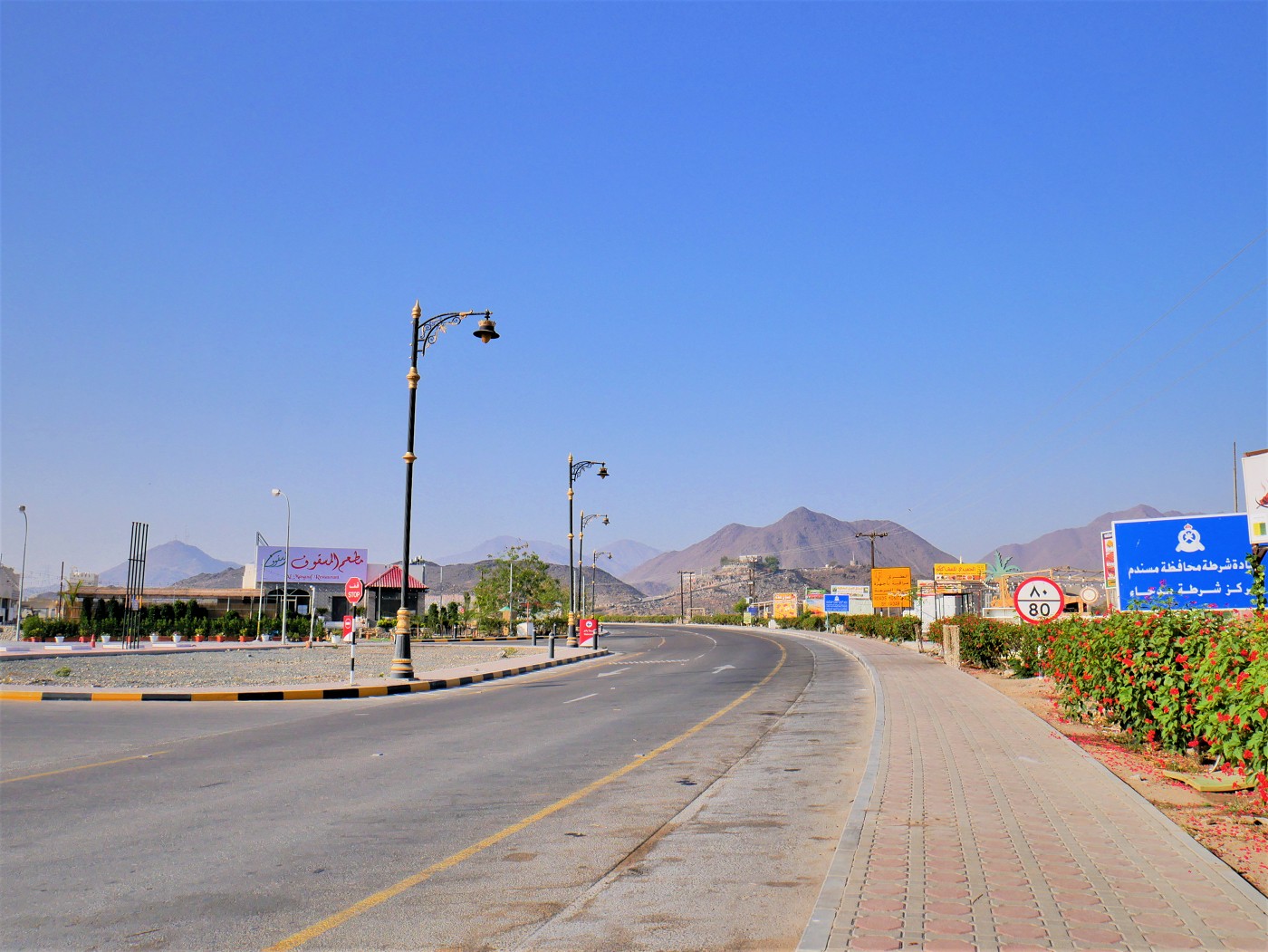
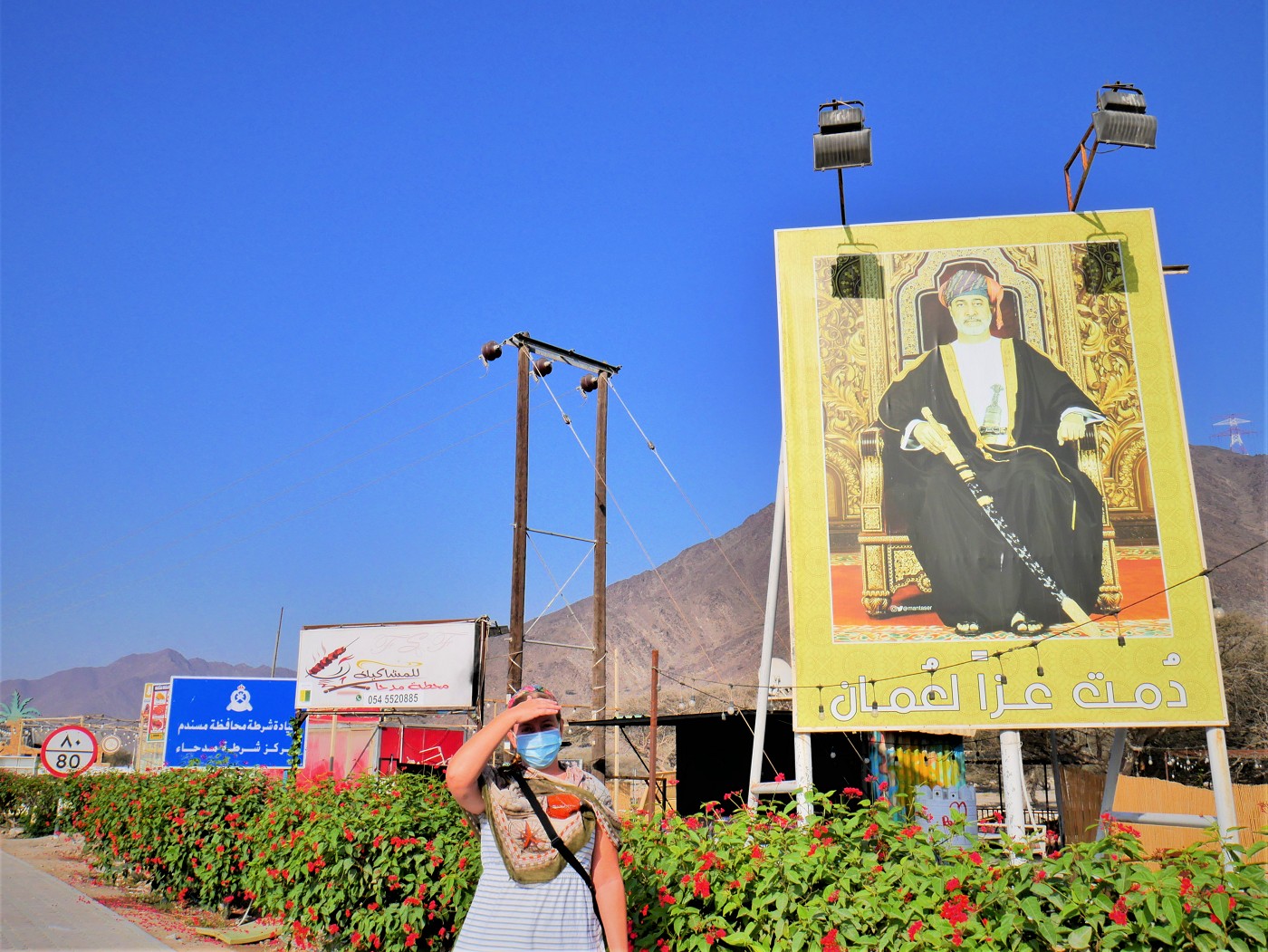
Next, we drove and I spotted a tower on a hill with an Omani flag. It wasn’t mapped on OSM, so I knew I needed to add it. There was also a fancy-looking hilltop restaurant that didn’t look open at this early hour. The sun was already quite hot—perhaps we should have embarked on this trip even earlier. The hilltop and tower had a very nice view and Jonas took a panorama. I gave the sealed bottle of water to our driver.


The next stop was Madha Park, which is next to an artificial waterfall similar to the one in Khor Fakkan. But it was turned off. Atop the waterfall was a giant portrait (see detail) of the late Sultan of Oman, Qaboos bin Said, who passed in early 2020. The park was also closed and looked like it was basically a giant picnic site cum playground for families with kids. Not our scene. As anticipated, our phones beeped to tell us we arrived in Oman.

Driving into Madha center, I noticed more and more that there are barely any people out and about. The streets were empty and only a handful of souls went about their business. There were some people at the beautifully-domed Sultan Qaboos Mosque in town. On the way to the airport, the traffic was two cars and one scooter. I think “Madha: population 3000” is a generous estimate. Perhaps a lot of people left for the Musandam Peninsula or mainland Oman for the pandemic?
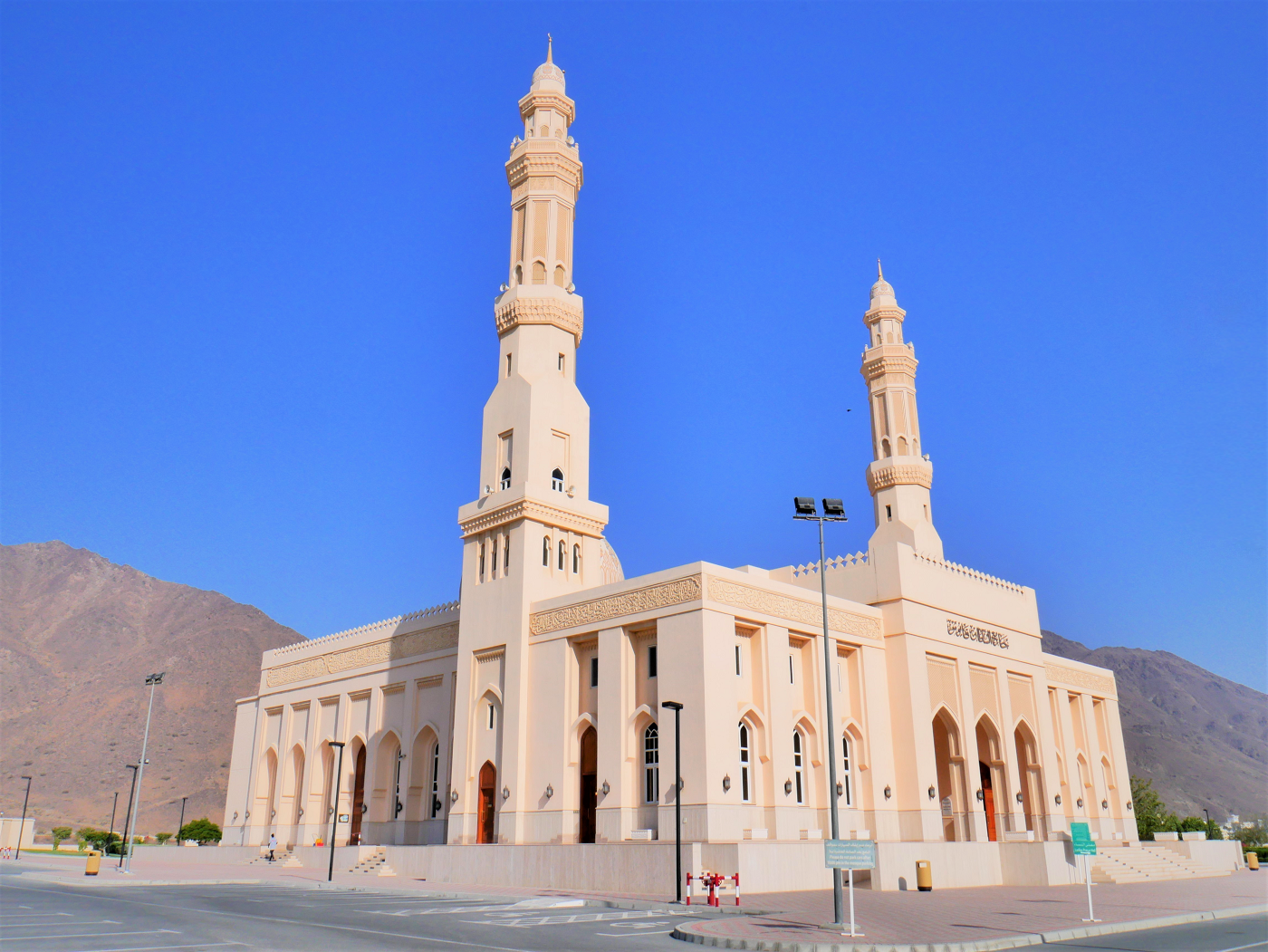
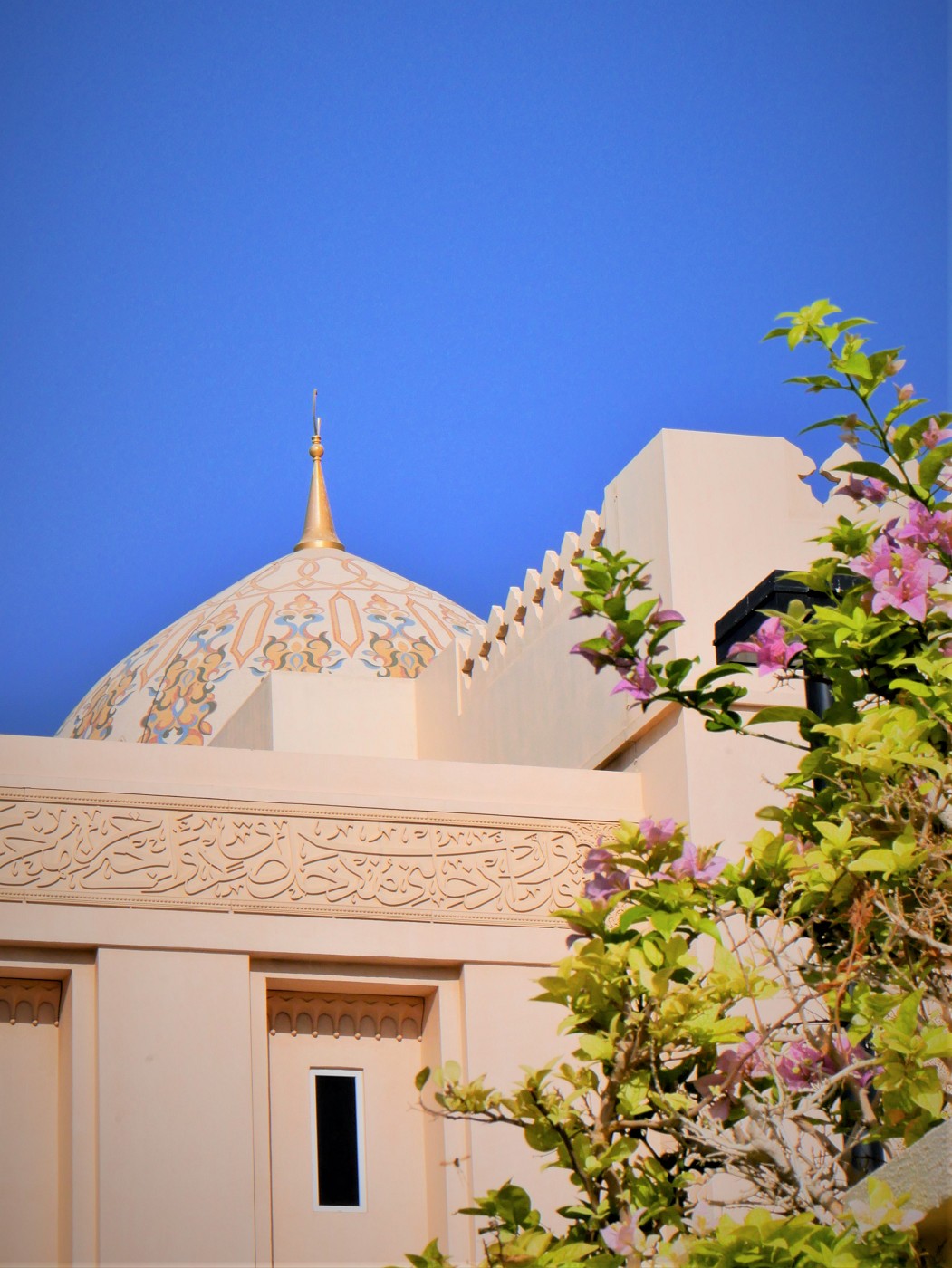
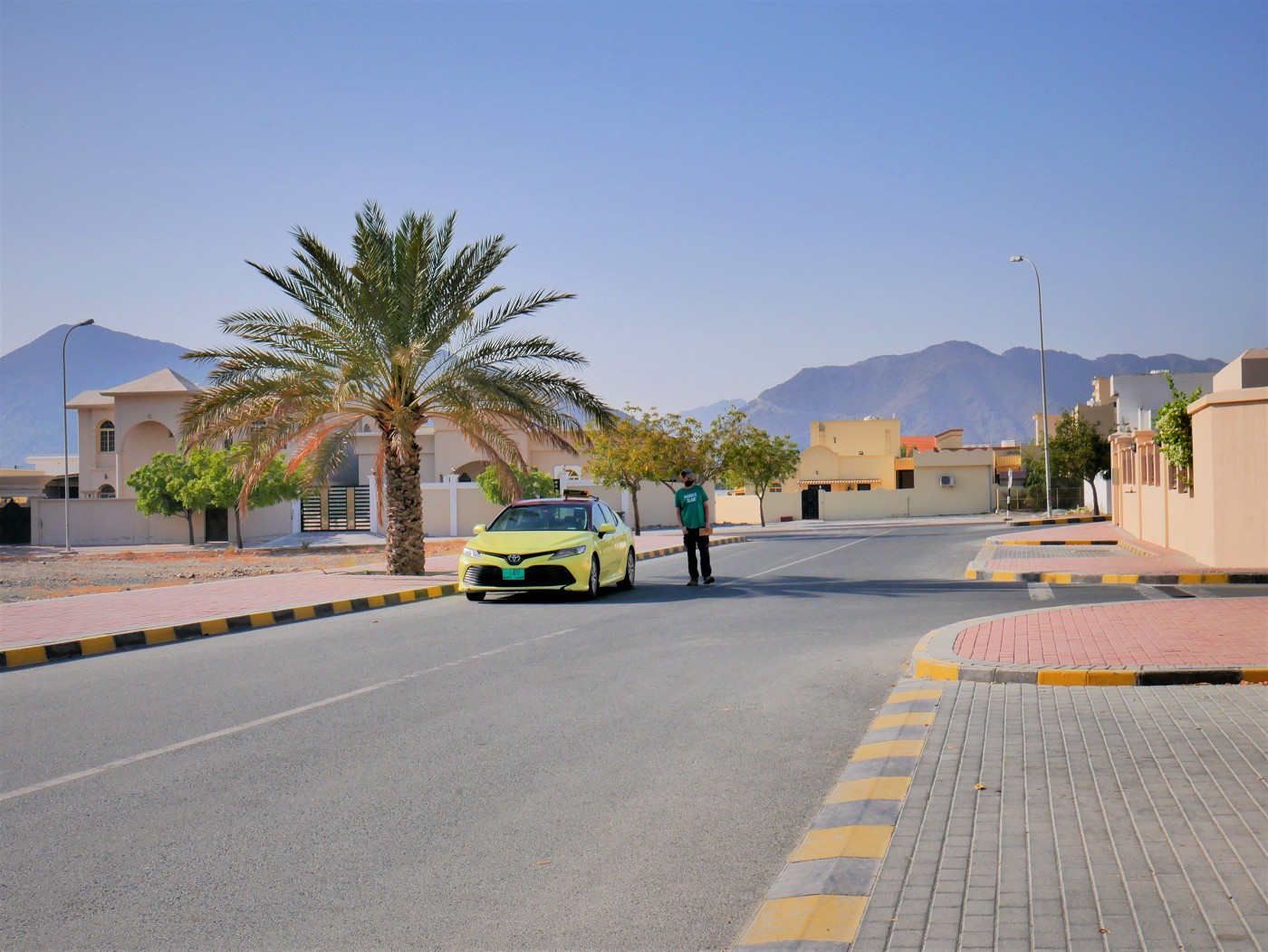
‘Airport’ is a generous word for it; Madha Airport doesn’t even appear on the Wikipedia page for Omani airports. There are no scheduled flights and there aren’t any hangars or other buildings on-site to protect one’s aircraft from the blistering sun and scathing sands. Not that there are any aircraft; the place is virtually abandoned. The fence that encloses the airport supports some rusting empty oil barrels. I love it.

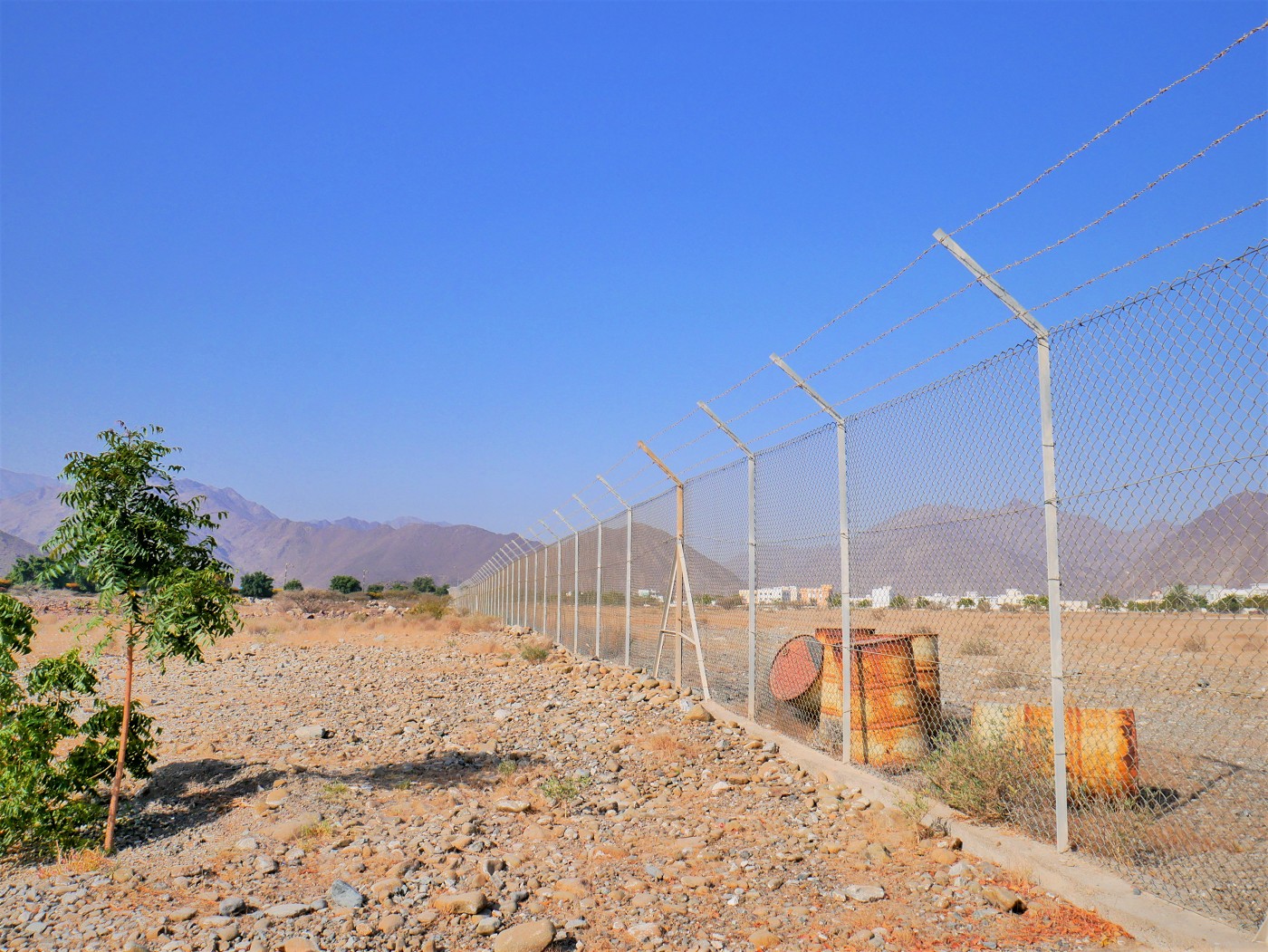
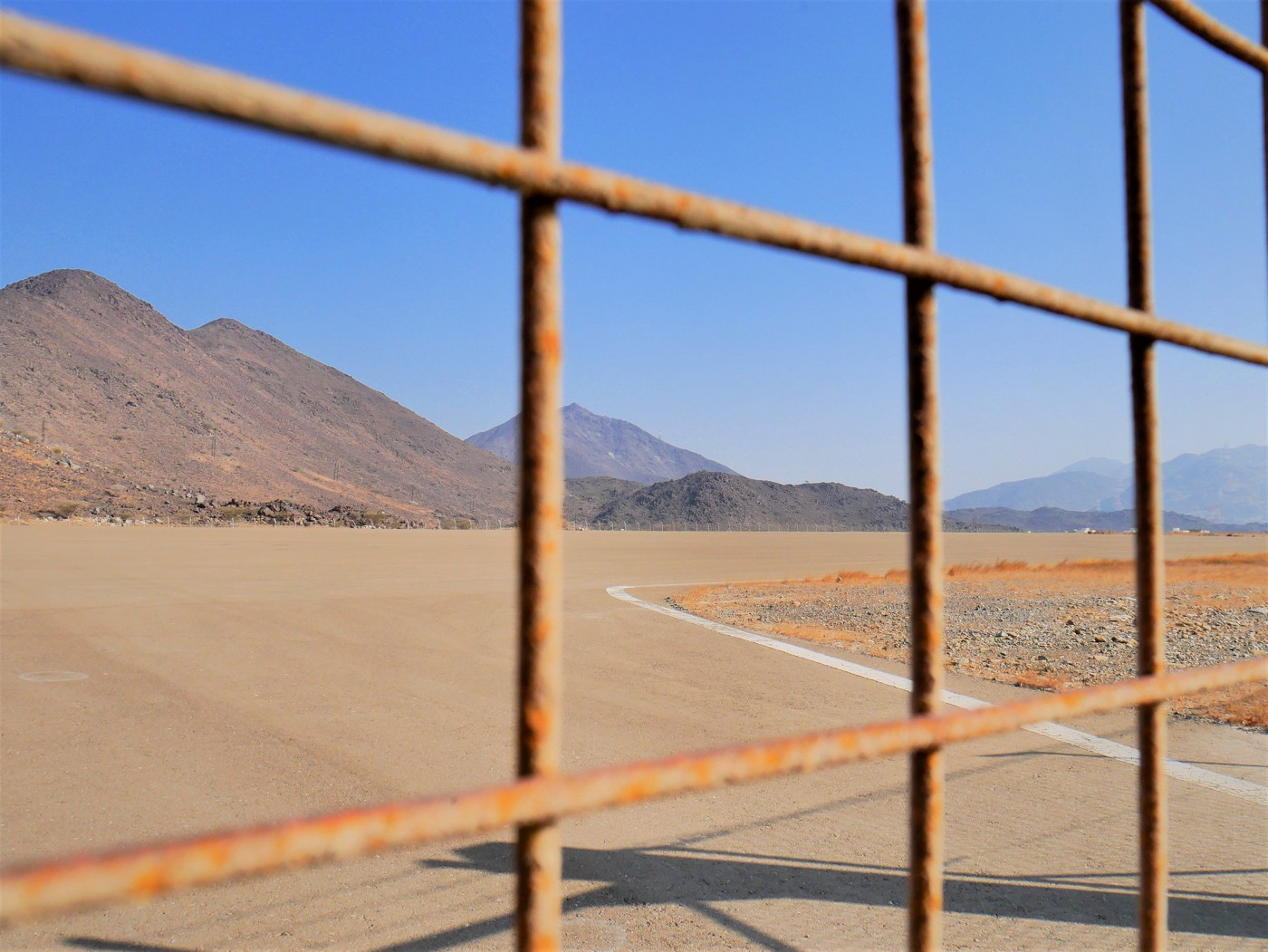
Government Buildings, ATMs, and Cafeterias in Madha City Center
We drove back into town and made a stop at a building that looked to me like a museum. I’d read that they were building a museum in Madha, so I’d at least want to enquire where it is and how much it costs to enter. When I approached the gate filming, a guard quickly told me to stop it and turn around. Oops. I later found out it’s the office of the governor of Madha.
The next thing we wanted to do was visit an ATM to obtain some Omani rial. At the local HSBC branch, the lowest amount Jonas could pull out was a colorful bill of OMR 5, which is €11 or US$13. It’s quite a strong currency. This ATM doesn’t issue any other currencies.
After this, it was time to break the bill by buying a cold drink in a local cafeteria. We wanted to eat at the ‘Fatayer Station’ mentioned on Google Maps, but it was closed, out of business, or wrongly mapped. But there was another cafeteria nearby. Our taxi driver was walking somewhere and we signaled him to park the car in front of the cafeteria. We ordered a mango juice and asked what our driver wanted. He just wanted water. I invited him to sit at our table, but in Oman, the corona rule is apparently not more than two people per table. Perhaps this also had something to do with a police cruiser arriving at the cafeteria at the same time, ordering a coffee from within the confines of his car.
I asked our driver’s name and he said his name is Stephen and he’s from Cameroon. We introduced ourselves and our passports as well. He has family in Germany, which is pretty cool.
Then a man in a white kandura – which they call a dishdasha here – walked in with the coolest turquoise and gold-patterned turban (muzzar) I’ve ever seen. All he missed was one of those Omani daggers (khanjar) tucked away in his waistband. He seemed to command a lot of respect from the employees and received his order very quickly.
Though there were only two people present when we entered, the cafeteria soon became quite busy. We slurped our mango juice quite quickly and paid for it. If you look at the price list and know the exchange rate, you can see that there’s a slight penalty for paying on UAE dirham instead of Omani rial. Jonas received the change in UAE Dirham instead of Omani rial, so he specifically had to ask for Omani rial to not lose his precious souvenir. He received two nice bills of 1 Omani rial for his collection. This isn’t even the smallest bill available!
Driving to the Border of Madha and Nahwa
No Banyan Trees, No Water in the Dam
Stephen drove us westward out of town. The next stop we wanted to reach was the Banyan trees at a wadi. We knew it was unlikely that we could go here because the road looked messed up on the map, but we wanted to give it a little try. Eventually, we took a right turn to the village of Sahna (صهناء) to see if we could approach it from an asphalted road. We couldn’t, but it was a nice little detour past palm tree plantations in a valley with gorgeous mountains enclosing this special place. I wonder how the people of Madha would feel if they read this post and saw a random picture of their backyard on my blog.
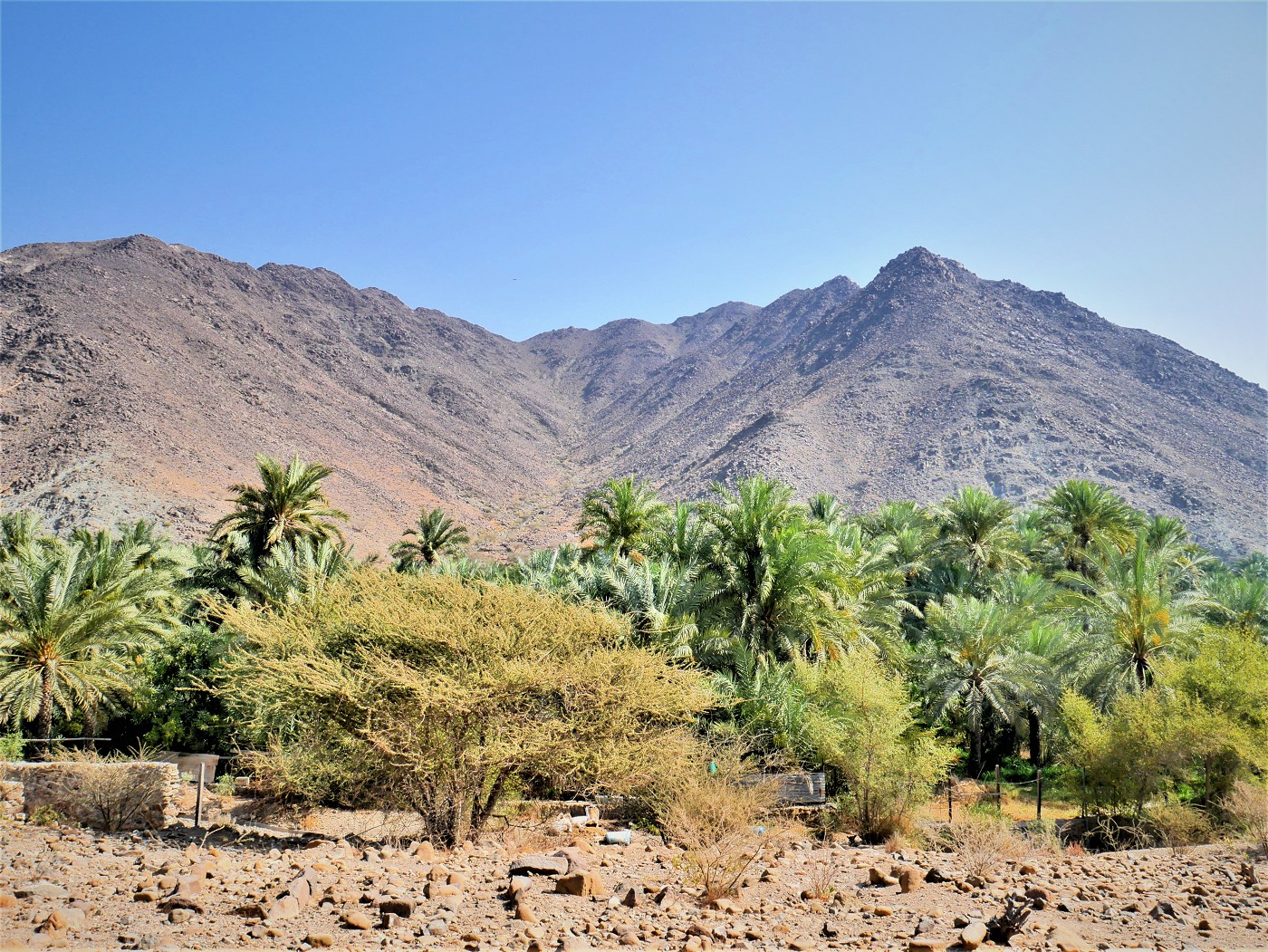
The most reachable thing between Madha and Nahwa from our research was the Al Sadah (السده) Dam. There’s a picturesque picnic spot and a heritage village one can camp at. But when we arrived, there were barriers to block the road.
Stephen parked the car and we walked up to the dam. There was no water. I asked Stephen how long he’s lived in the UAE. He answered with five years. There was a big sign in Arabic probably saying when they built the dam and all three of us stared at it. Stephen asked me if I can read Arabic, to which I said “Not really, but I’m trying,” showing the hitchhiking sign in my hand. He says he can speak Arabic, but reading is tough. That’s the truth.
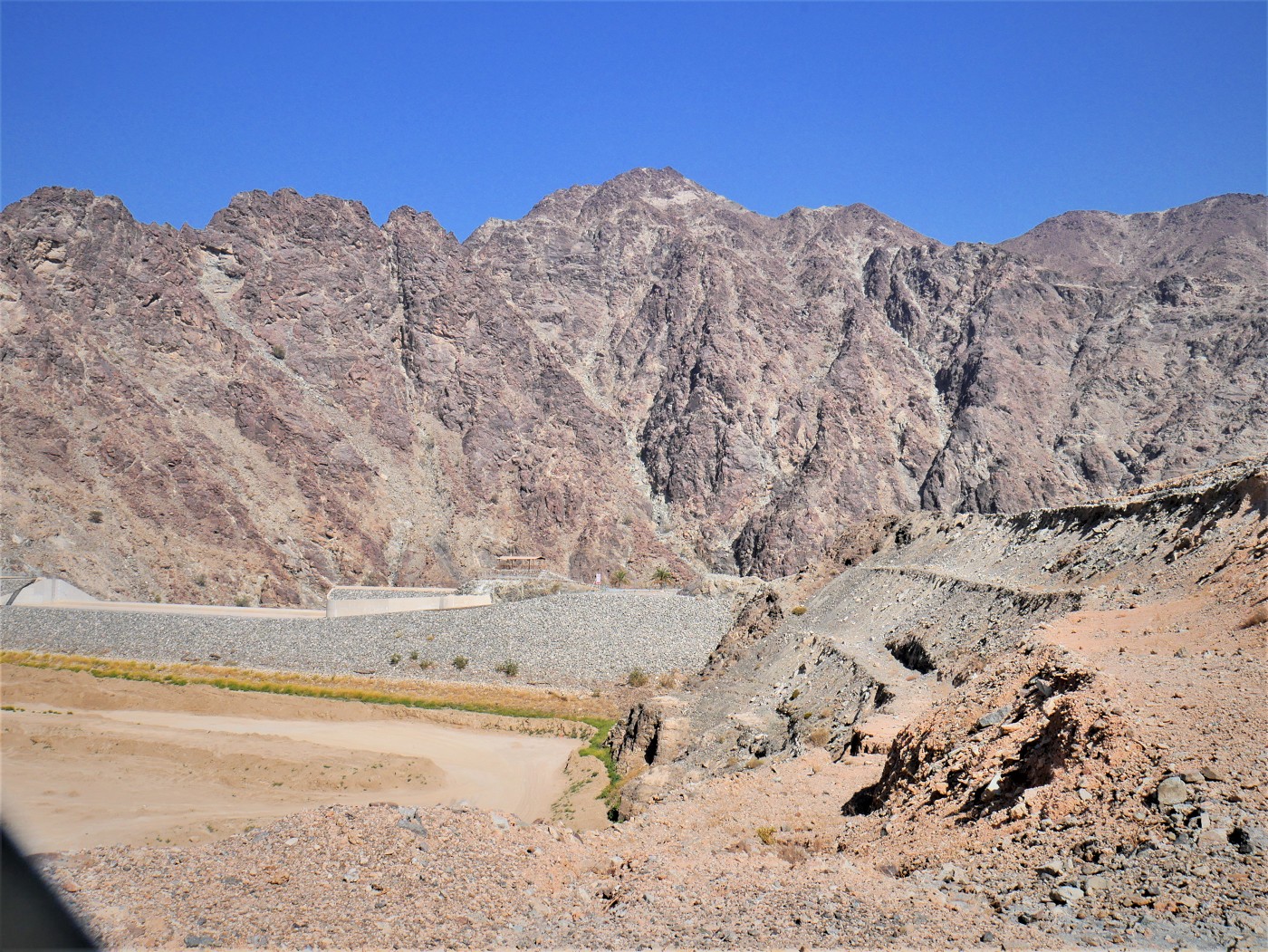
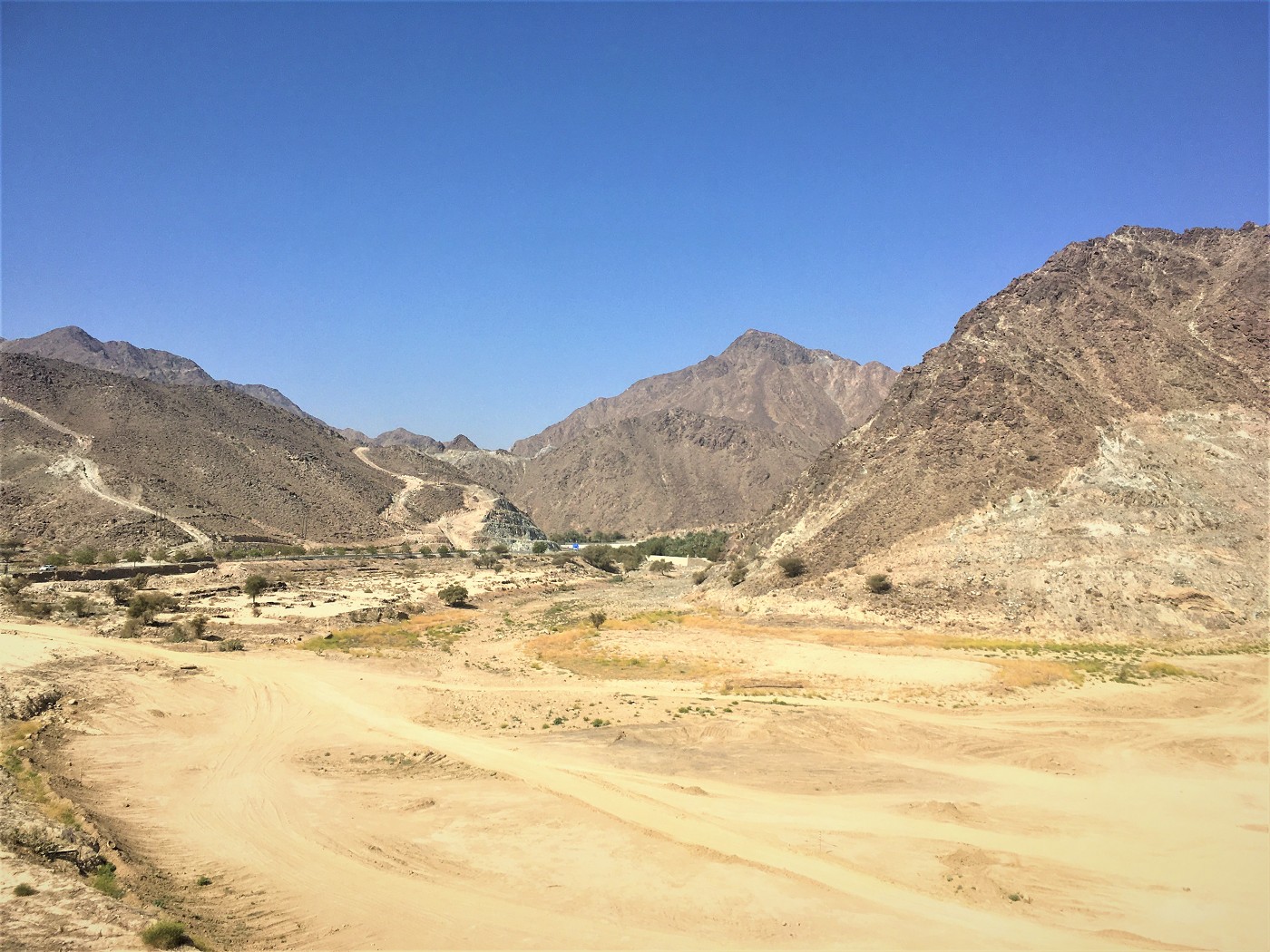
We didn’t try to walk to the heritage village because we knew it would be closed. This entire pandemic really helps you lower your expectations of things—I’m simply happy to even be here. Even though it was barely 9:30, it felt like we were walking through the midday heat already. I didn’t expect to see any water today.
The Eastern Border between Madha and Nahwa
We drove on through small adorable villages on a road that became skinnier and skinnier. Every now and then, we’d pass through a ford. They built the entire infrastructure around the occasional rainfall that would fill up the dry wadis and cause flash floods. Sometimes, these fords would have a warning sign saying “stop if water is at red”. A bunch of small red poles would follow, which I presume indicates the maximum water level for the ford to still be passable by vehicles with high clearance and a courageous driver.
The road to the border of Nahwa passes several picnic zones with playgrounds. I’m not sure if I understand the high demand for picnic zones, but these exclaves appear geared toward a very specific type of day-tripper: the family with young kids and a 4WD. I think their real target audience is young childfree backpackers, but OK.
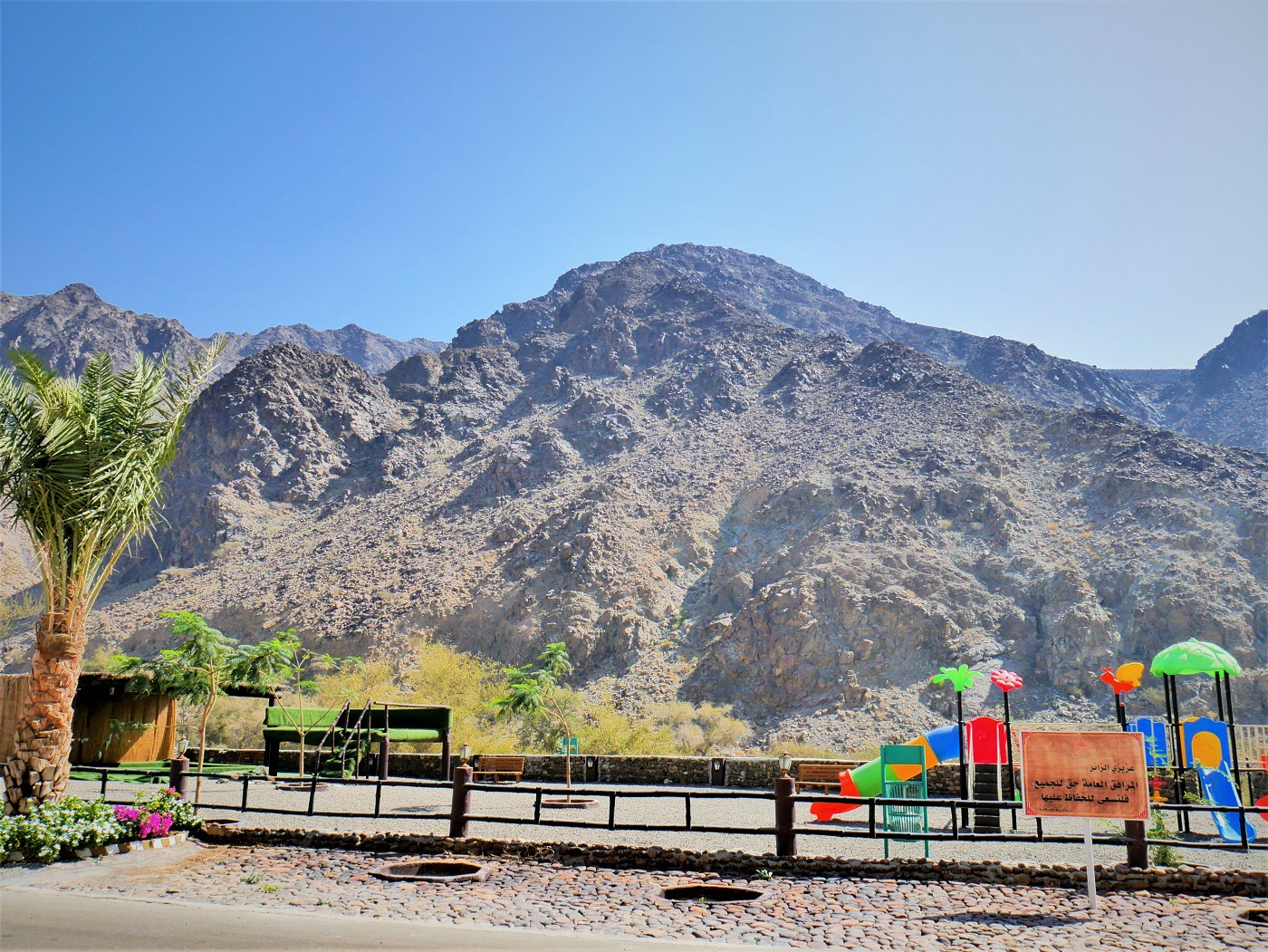
At some point, there was some confusion at a roundabout; one sign said take a left “to the Oman – UAE border”, but we knew Nahwa was to the right. After some crickets, I figured that the road on the left was the internal Madha road to the western village. It looked very fancy in quality. Anyway, nearly all road signs within Madha can say “to the Oman – UAE border” and it will be a true statement.
We drove past a sign and Jonas asked Stephen to stop. Behind us was a sign saying “مدحاء ترحيبكم” or “Welcome to Madha”. I would have approached it if not for the drove of donkeys at the sign. Very cute, but I won’t approach in case they’re feral or otherwise untrusting of humans.
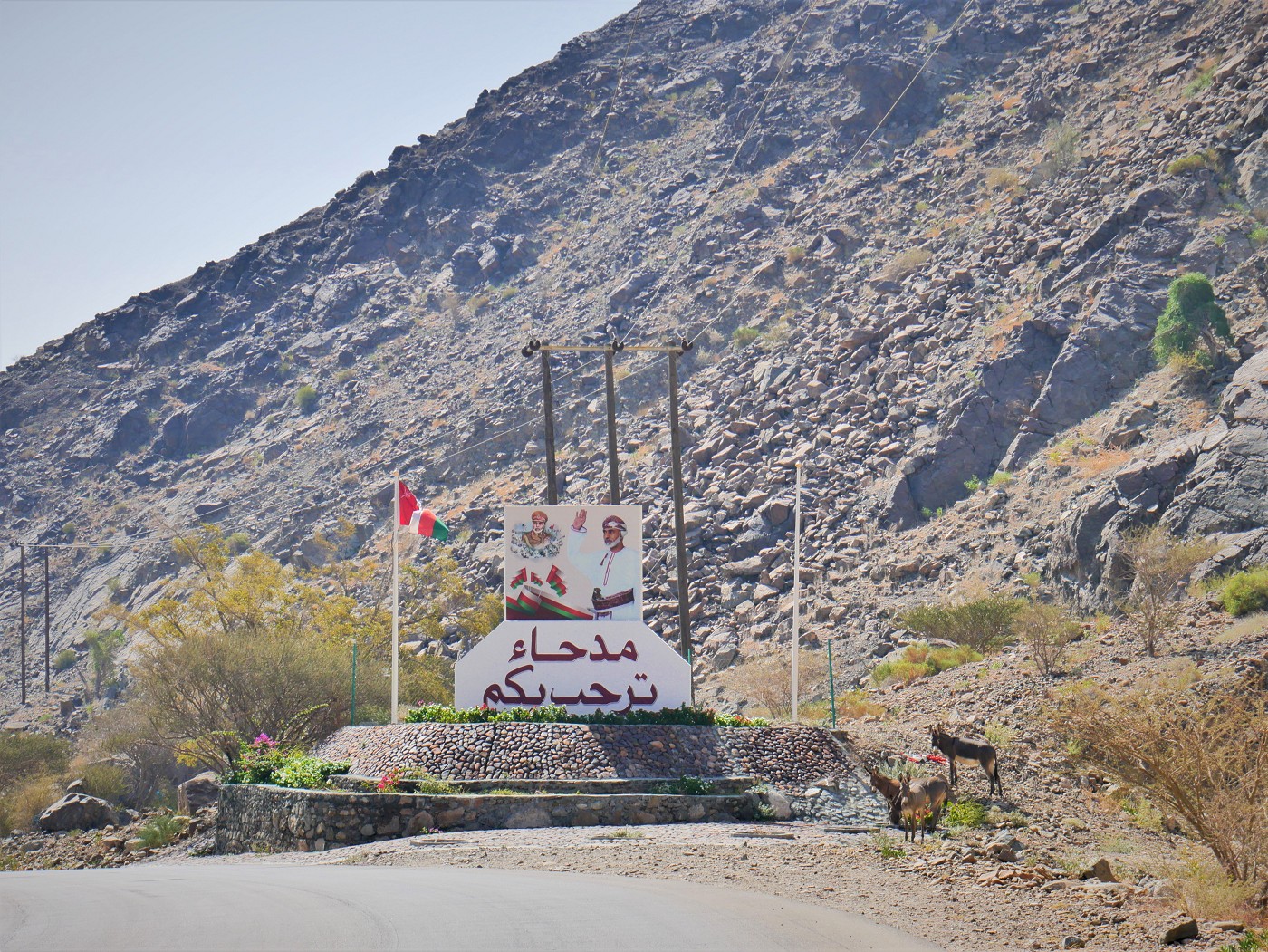
The OSM map and Google Maps do not agree on the size of Nahwa. Jonas also read somewhere that there’s a strip of no man’s land between Madha and Nahwa on this side. My GPS already said we were inside Nahwa, UAE when Google Maps said you’re still in Madha, Oman, though the online version of OSM seems to agree with Google Maps.
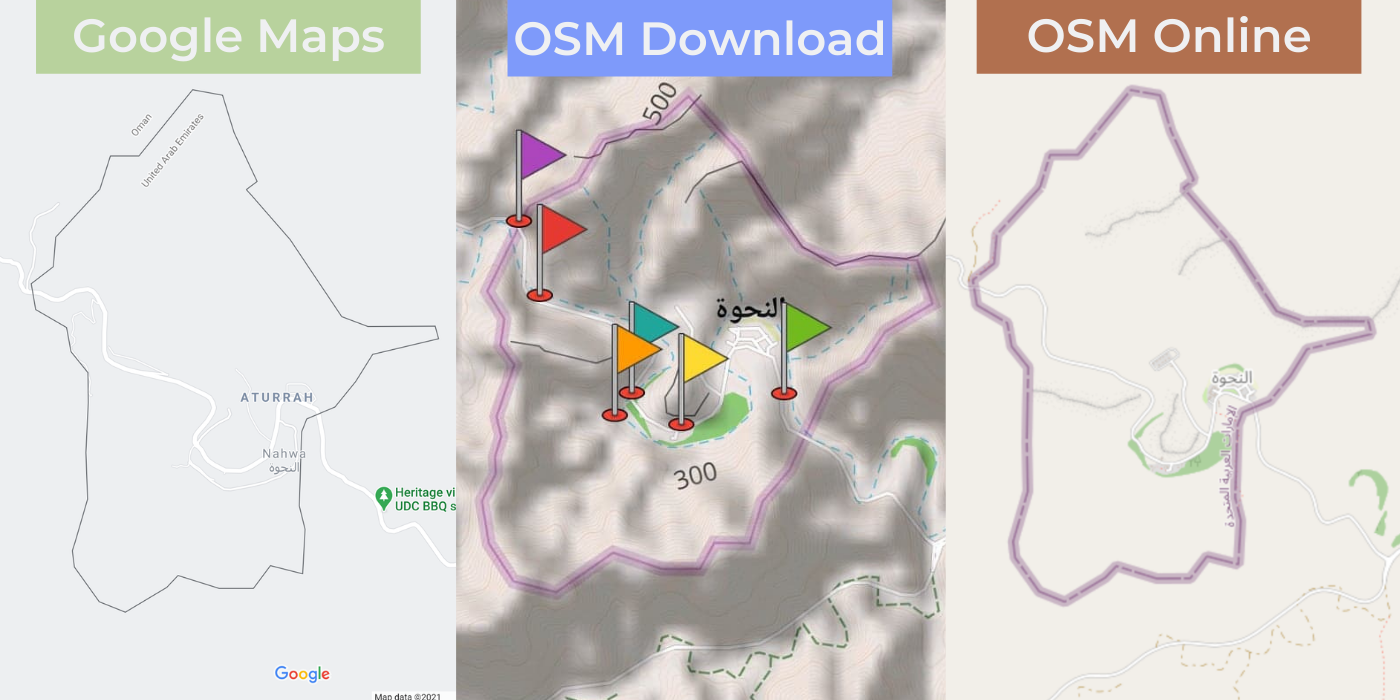
Either we missed the sign that says “Welcome to Nahwa” or there isn’t one anymore. Because before we knew it, we pass by a portrait of the ruler of Sharjah, Sultan bin Muhammad Al-Qasimi. Quickly, we were in front of a new building shaped like an old fort that houses Nahwa’s police station. Sitting in the back of a car is always pretty bad for visibility.
Visiting Nahwa, UAE
New Nahwa: a Normal Village
Finally, we’re in the hole of the donut! I’m so happy we made it here. Our phones beep again to say we’re back in the UAE.
A pickup truck that has been overtaking us and then stopping somewhere a couple of times pulls up next to us. The guy rolls his window down and so does Stephen. They talk in Arabic about what he’s doing here and how lost he is. He tells the man that he’s here for tourism and rolls down Jonas’ window to reveal our touristy faces. The man gives a warning for the road ahead and then drives off.
I thought I saw something interesting, so I asked Stephen to make a right turn. But it was just an office of the Sharjah Archaeology and Antiquities department or something. We drove on through town past a local health center that looked very shiny. I’m confident this is where the Nahwanis have received their covid vaccines. Since most sources say there are only 40 houses in Nahwa, there’d only be about 500 people to vaccinate.
Nahwa feels very narrow. The steep dry cliffs that surround this valley make even thinking of expansion infeasible. A park, a cafeteria, a grocery, a school, and the buildings previously mentioned are all tightly squished in this area next to the road. If it wasn’t for the abundance of speed bumps speeding cars would make this quiet village unsafe.
Old Nahwa: Hanging Gardens and Nahwa Cave
At some undefined point, the new buildings vanish and older ones appear. We make a stop at a big sign saying Al Nahwa Old Hamlet. There are loads of signs around informing us about all the archaeological sites there are here. I pick one path and follow it down. Jonas and Stephen follow. But it leads to nothing in particular. I walk past a corner and see a woman in a bright green abaya with a matching Gulf-type leather burqa mask that covers her eyebrows and upper lip just going about her business. I turn around and stop Jonas and Stephen to return to the car. “Nothing to see here.”
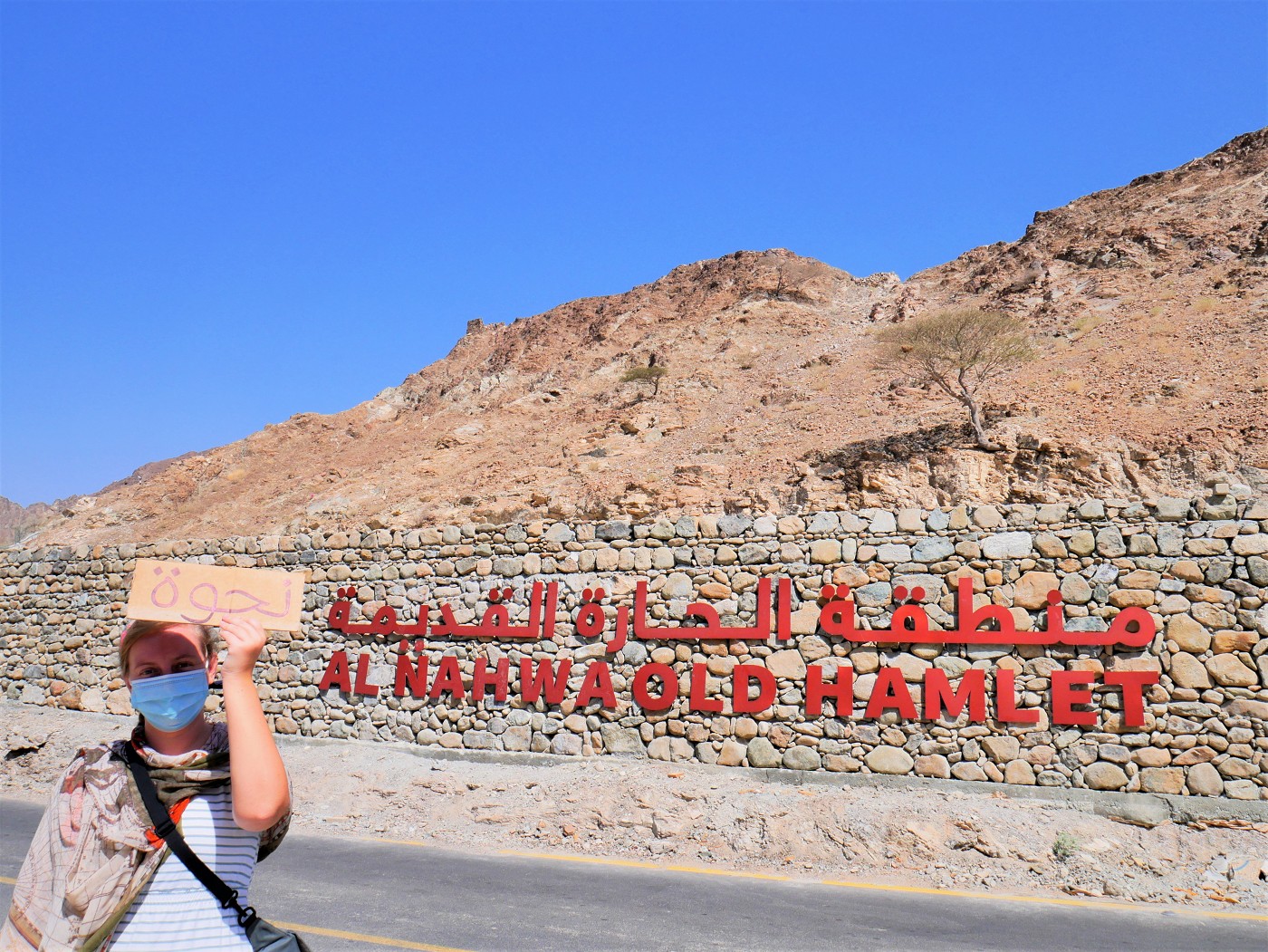
We drove on and made a stop at the ‘hanging gardens of Nahwa’. The road had become unpaved and I felt the dread of making my case for traveling through to Wadi Shis. A civic cleanup vehicle stops in the same alley and several workers start picking up dead palm tree branches and putting them in the boot. We walk past them to the hanging gardens while Stephen hangs out in the shadow of a tree.
These hanging gardens are a piece of Jonas’ research. I wondered what it was. But unsurprisingly, we hit a locked gate once again with some greenery behind it. There was a small puddle of still water with floating plastic trash in it and a few zooming bees that looked like trouble. Alas, this (ancient?) world wonder is closed to the public for now and probably under maintenance.
Back at the car, the maintenance vehicle drives off. We follow them on the unpaved, but overall not a bad road. Jonas says to Stephen that the Nahwa cave is probably our last stop in Nahwa. I’m hoping it’s not. Another pickup truck coming from the direction I’m hoping to go stops to tell Stephen that the road is bad up ahead. Not helping.
I couldn’t really enjoy the Nahwa cave because Stephen turned around the car and Jonas is serious about going back. I tell him that it’s only 4.3 kilometers from the cave to Wadi Shis and that we can tell Stephen he can go as slow as he likes. Otherwise, I’m willing to walk or hitchhike it. Just give me my passport, hat, more water, and my hitchhiking signs. It’s only 10 in the morning and even though it’s hot, the narrow valley this road lies in always provides some shadow. Among other concerns, Jonas is not a fan of the idea of splitting ways during this pandemic.
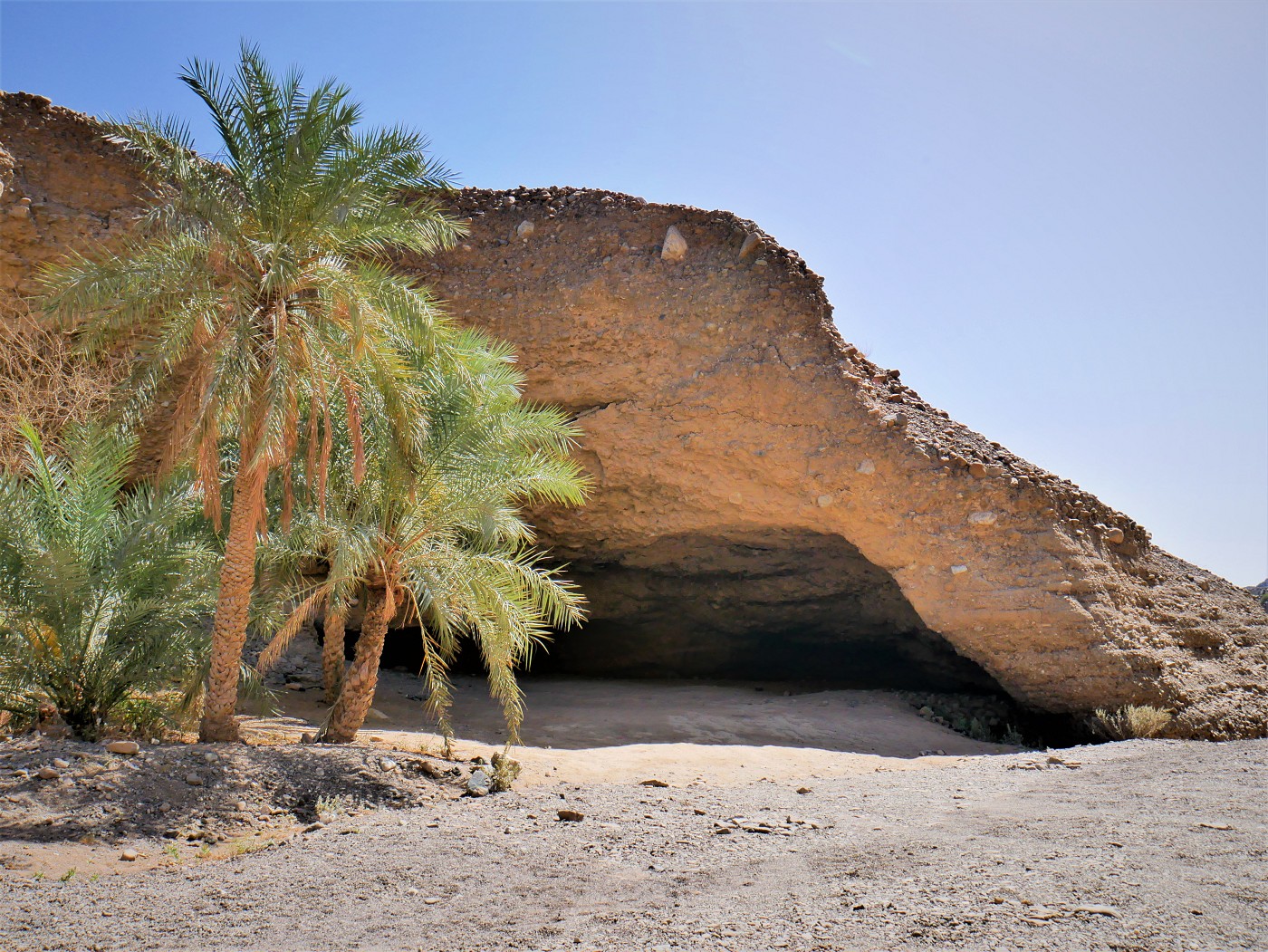
I hang around in the cave a little longer trying to absorb both the cool and the size of it by comparing the height of the palm trees outside, while Jonas returns to the car. When I get back, Stephen turns around the car again and starts driving to Wadi Shis. I wonder what Jonas said.
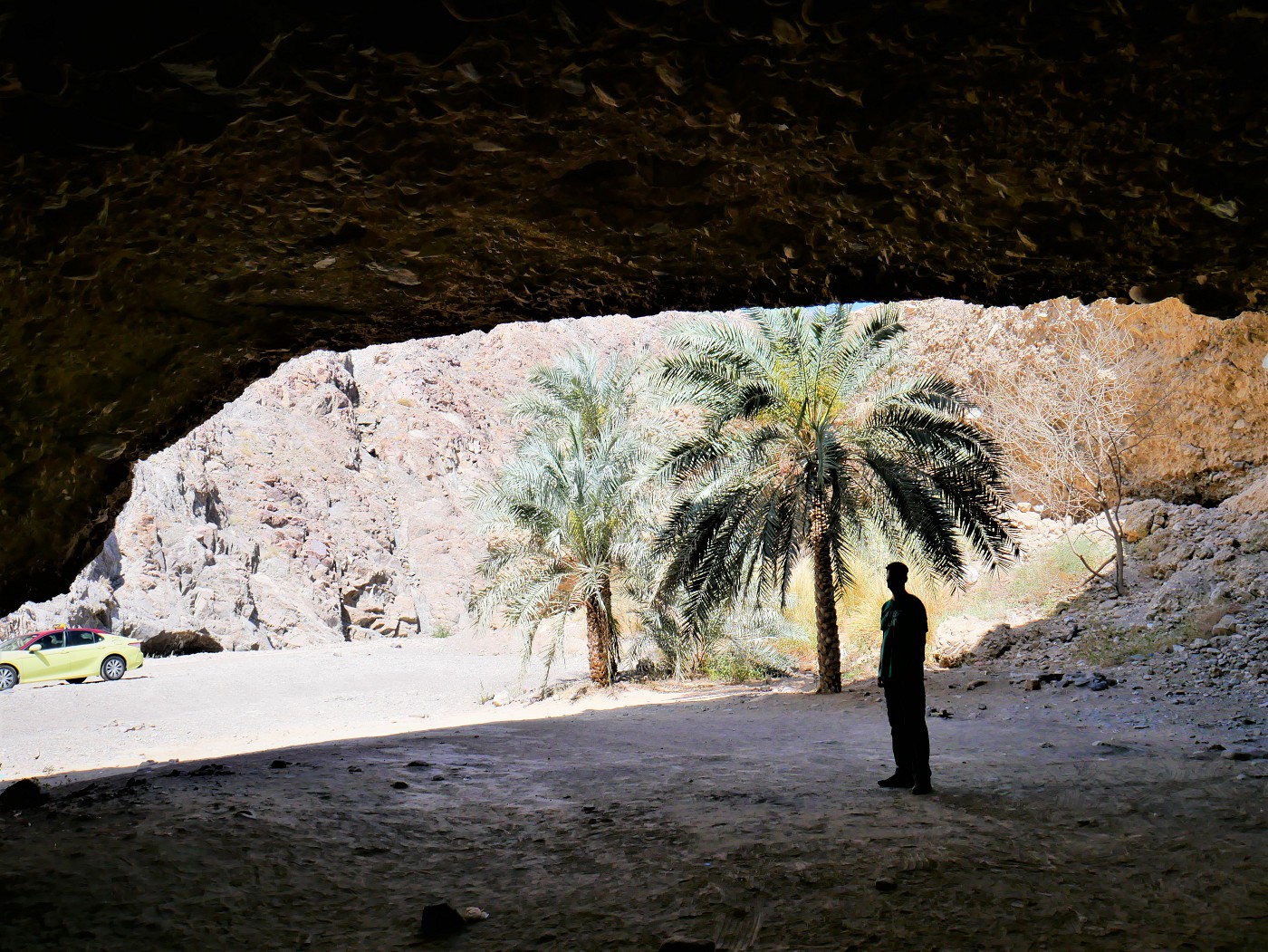
The Bad Road between Nahwa, Hamid Hajarbni, and Wadi Shis
We drove slowly westward on the bad road and overtook the parked cleanup vehicle once again. We re-entered Oman without noticing it very clearly. Only every now and then, we’d see a tiny white obelisk marking the border. The road is narrow and the cliffs are about 5 meters tall on both sides at times. It appears that someone must have dug this road out within the cliffs, or perhaps we’re also driving in a dry river? I guess it’s occasionally a wadi.
A road sign told us to make a sharp right to Wadi Shis, which they call “Chees” on the sign. The Omani village in the western part of the donut goes by the name Hijer Bani Humayd. There are about 40 people living here. Since the road only touched upon the entrance to the village and doesn’t pass through, we only saw goats and trees and a passing car again looking confused at our taxi. But I guess we’re in deep enough now for there to be no comments on the road quality.
One thing that stood out was that every time the road made a steep incline, the surface had been concreted over. It’s just the relatively flat parts that are a little rocky and bumpy. Nevertheless, our tires never launched any big rocks to hit the bottom of the car with that awful sound—you probably know which sound I’m talking about. I’ve driven a handful of adventurous unpaved roads myself and I would definitely be comfortable driving this myself in a vehicle similar to the taxi. And keeping the pace low isn’t that difficult for such a short stretch. But don’t take my word for it; here’s more proof of concept that you can do it in a small car:
The navigation on my phone showed there was only a kilometer to go till Shis. In our minds, directly at the UAE border the road quality would change again. We crossed the border back to the UAE without noticing much. I only saw one lonely border marker with no context. For another 700 meters, the road was still unpaved. We rounded a corner and finally saw the end of the infamous Nahwa to Shis road. Stephen also looked relieved to see asphalt again.
But the nicely asphalted road said “private access” parallel to a continuation of the shitty road that had a sign saying “tourist road”. Ahem? Stephen looked at us for answers, but we said we also don’t know. He drove onto the asphalt and it was ahh, nice! On this stretch of private road, there’s a health center, a mosque, a coop, and some random civic buildings. Before we knew it, the tourist road rejoined and the private road became public.
Driving through Wadi Shis to the Shis Park
Our last stops on this journey were in Wadi Shis and Bithnah. The town of Shis is named after the wadi that occasionally flows through here. The direction of this wadi is actually in the direction of West Madha, Nahwa, and Madha again, and then back to the UAE to the east coast. Part of the route we took overlaps completely with the riverbed, which used to be the only access road to the village of Wadi Shis.
When those rare rains fall, they often come in the form of a flash flood, filling up those steep walls and traveling at high speed. People regularly die in these flash floods while they’re hanging out in the path of the wadi. There are videos online of people losing their 4WDs like a tiny toy car washed down a drain.
All dangers aside, it begs the question: can you kayak in a wadi? It will definitely be whitewater and not a leisurely kayak trip like down the Danube. Still, I wonder…
We made a stop at the Wadi Shis Al Qawa water pond. There was a little bit of water in there and a tiny weir. It looked like pretty good water management on a small scale, unlike the huge dam further downstream. When we returned to the car, we ran into the palm tree cleanup guys again and Stephen had a chat with them in Arabic. They advised him some more on the road ahead, which I assumed would pose no more troubles.


The asphalted road winds up to an area that’s brand new: Shis Park, which opened in October 2020. We made another stop to check it out.
They had two tall artificial waterfalls and lots of greenery and sitting areas. Of course, there were many playgrounds for kids. It’s the fanciest picnic spot in the area because there’s also a classy café attached to it with fancy drinks—though it had a piss-poor 2.3-star rating on Google Maps with terrible reviews at our time of visit. We got Stephen another bottle of water and we visited the very clean bathrooms on site.
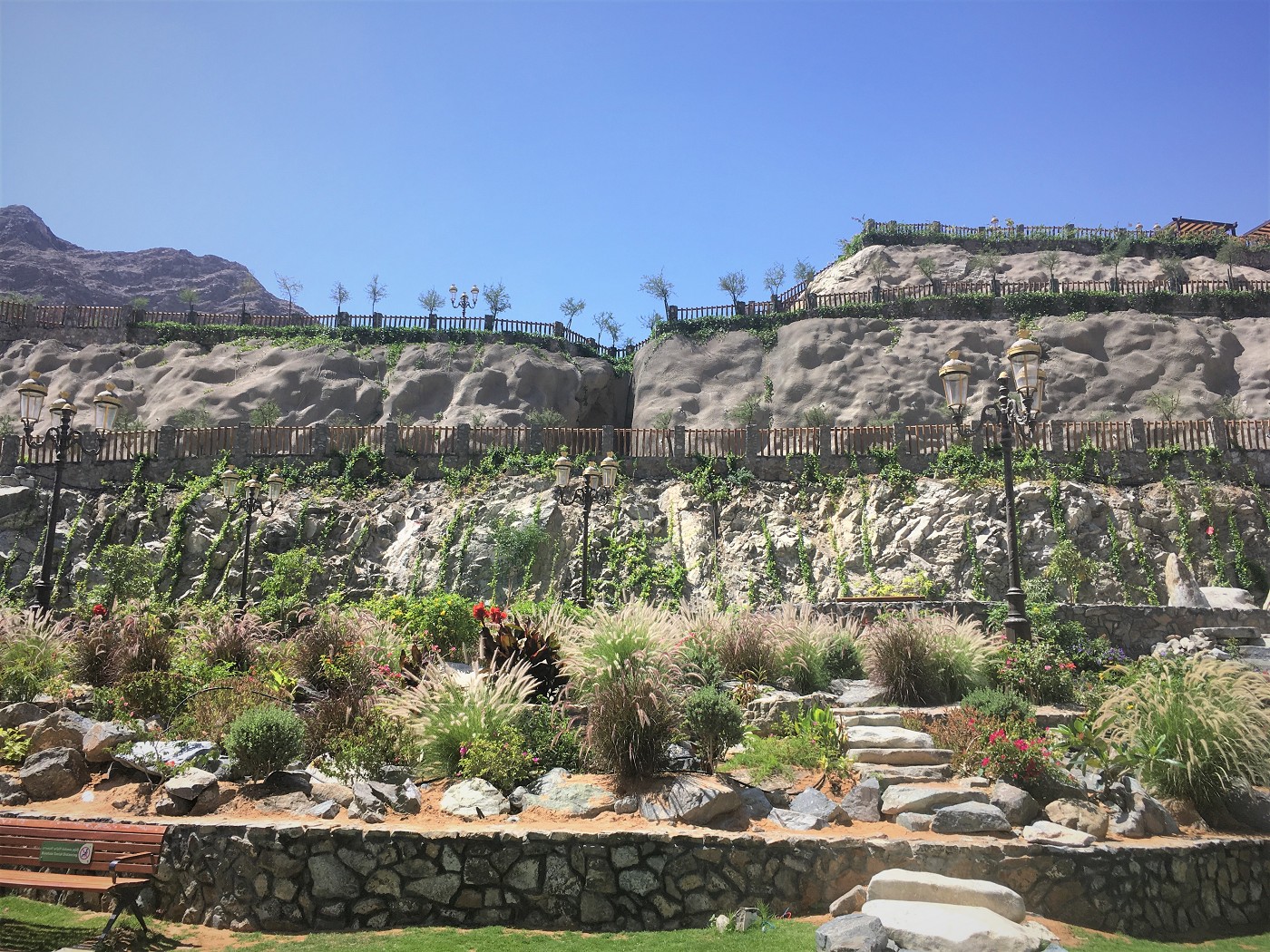
After the bathroom, we returned to the two waterfalls to take some photos, but they’d turned off one of them, making the whole thing look a little sad. Though it’s a pleasant area, we don’t really picnic and we were too tired to hike up the stairs to the highest part. We didn’t think that the views would improve since most of the park faced the giant parking lot for busier times.
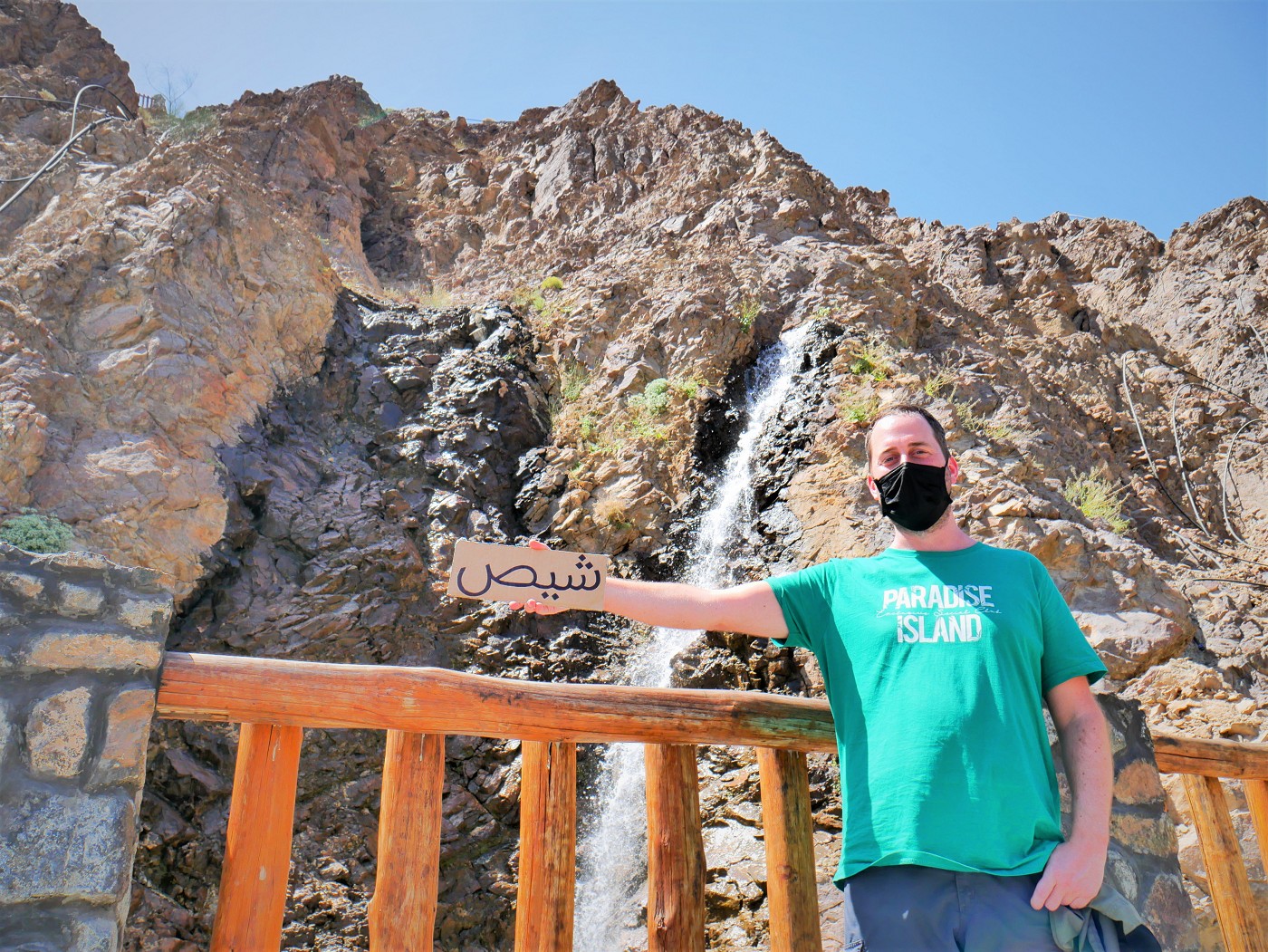
So we continued on to Bithnah, our last stop before going back to our hotel.
Wadi Shis to Bithnah and Back to Fujairah
From Shis Park to the massive shiny new highway was a short drive. This is the road that goes between Khor Fakkan and roughly Masafi. There are several tunnels on this stretch, but from Shis to Bithnah there’s only one. Everywhere on the side of the road, you can see the construction materials, dump trucks, and excavators still doing things to finish this project or making the cliffs less hazardous. This road opened in 2019, but Google Maps still doesn’t know the tunnel we took is now bidirectional.
The highway was smooth and fine and Stephen drove very defensively, much to our liking. Some other drivers were doing the macho thing and making things unpleasant, but we felt very safe. At Bithnah, the road speed slowed down and we ducked into town. Many streets are one way and we used our phone navigation to find a way to Al Bithnah Fort. In the pictures online, it looked rather pretty.
Then we stumbled upon another unpaved road and made the quick decision that enough was enough for today. We navigated out of the maze and turned back onto the highway to go home to Fujairah. I think Stephen was also happy with that decision.
On the drive home, we passed by a dam in Fujairah that looked rather empty. We also passed the huge Sheikh Zayed Mosque of Fujairah, which is the second-biggest mosque in the country after the mosque of the same name in Abu Dhabi.
Back at V Hotel, we paid and thanked Stephen for his services today. He said we can call him anytime for more taxi rides. Without talking, we’d already decided he could drive us to Sharjah City when the time came. Stephen said he wanted that. We said goodbye and Jonas and I went up to take a shower and order some vegetarian beyaynetu from the only Ethiopian restaurant in Fujairah.
What a fantastic trip.
Resources + Map of Madha and Nahwa
Tips for Driving through Madha and Nahwa
My tips to plan your own route through Madha and Nahwa are as follows:
- Use Mapillary to look at street-level images
- Google Satellite View is also great for seeing what’s asphalt and what’s crap. You can even see the white obelisk border markers sometimes
- Turn off your mobile data usage/roaming when driving through Oman
- Here’s a handy map! Use the menu button on the left to show/hide details about the roads, the borders, and points of interest. Click the satellite image to switch to satellite view, which costs more data. Save the following map to your device by clicking the star:
Madha and Nahwa Q&A
- Q: Do I need to obtain an Omani/UAE visa to travel to Madha/Nahwa? A: No, there is no immigration/customs control at the border
- Q: Should I bring my passport to Madha and Nahwa? A: Yes, bringing your passport to show that you’re legally in the UAE. Carrying a form of ID is always a smart idea
- Q: Do I need to obtain Omani Rials to buy things in Madha? A: no, you can continue paying on UAE Dirhams if you want
- Q: Do I need a four-wheel-drive to drive Madha and Nahwa? A: No, but people who have bought 4WDs will tell you that you need a 4WD because they need to justify buying a 4WD
- Q: When is the best season to visit Madha and Nahwa? A: The best season in the UAE and Oman is winter (October – March). The best time within those months is January. The chances of seeing water in the wadis of Madha, Nahwa, and Shis are also highest in winter
- Q: What’s the best time of day to visit Madha and Nahwa? A: That depends. If you’re interested in Madha’s lively night market full of food stalls, go to Madha around sunset. If you’re interested in driving through from Madha to Nahwa and Shis, it’s best to do it in the daytime since there are no lights on part of the road. And if you want to do both, it might be a good idea to bring camping gear and first visit the night market, then camp out and watch the stars, and drive on to Shis the next morning
- Q: Can I forget about all the COVID-19 rules and restrictions once I’m in Madha? A: No, please adhere to the local COVID-19 rules in Oman and don’t endanger the locals. The Omani police might fine you if you don’t adhere to the rules of mask-wearing and social distancing
Thank you for reading! Consider buying me tap water!
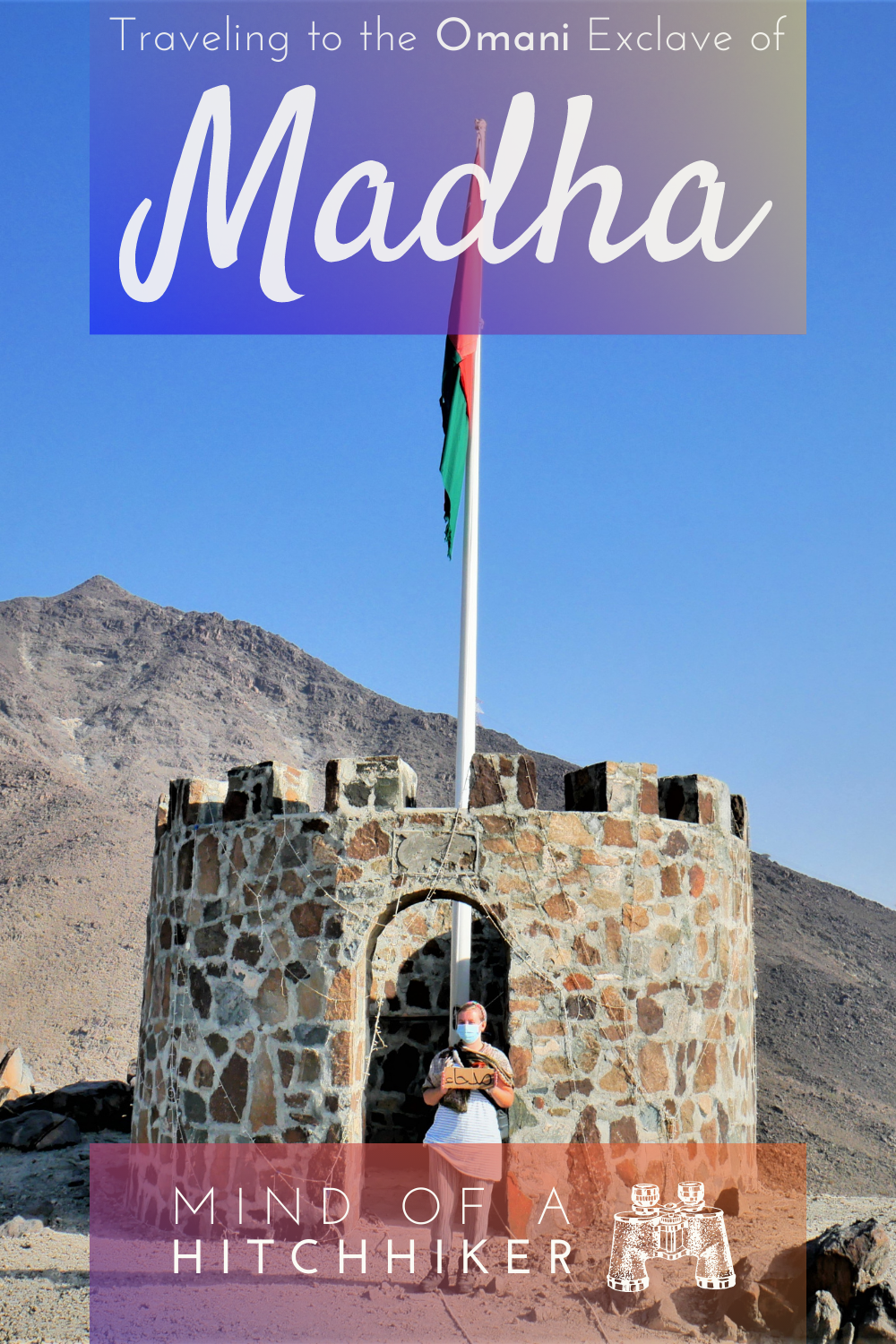

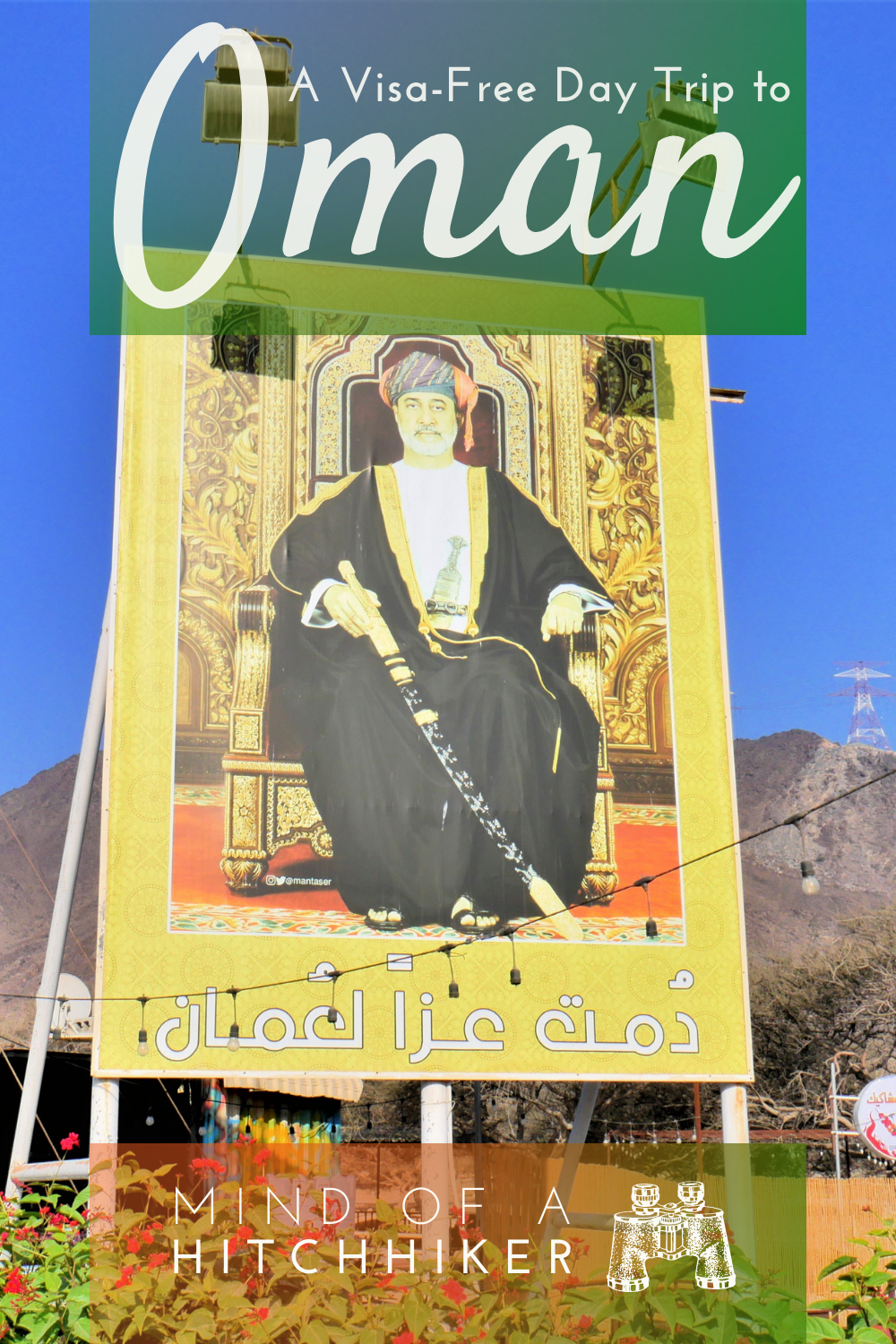
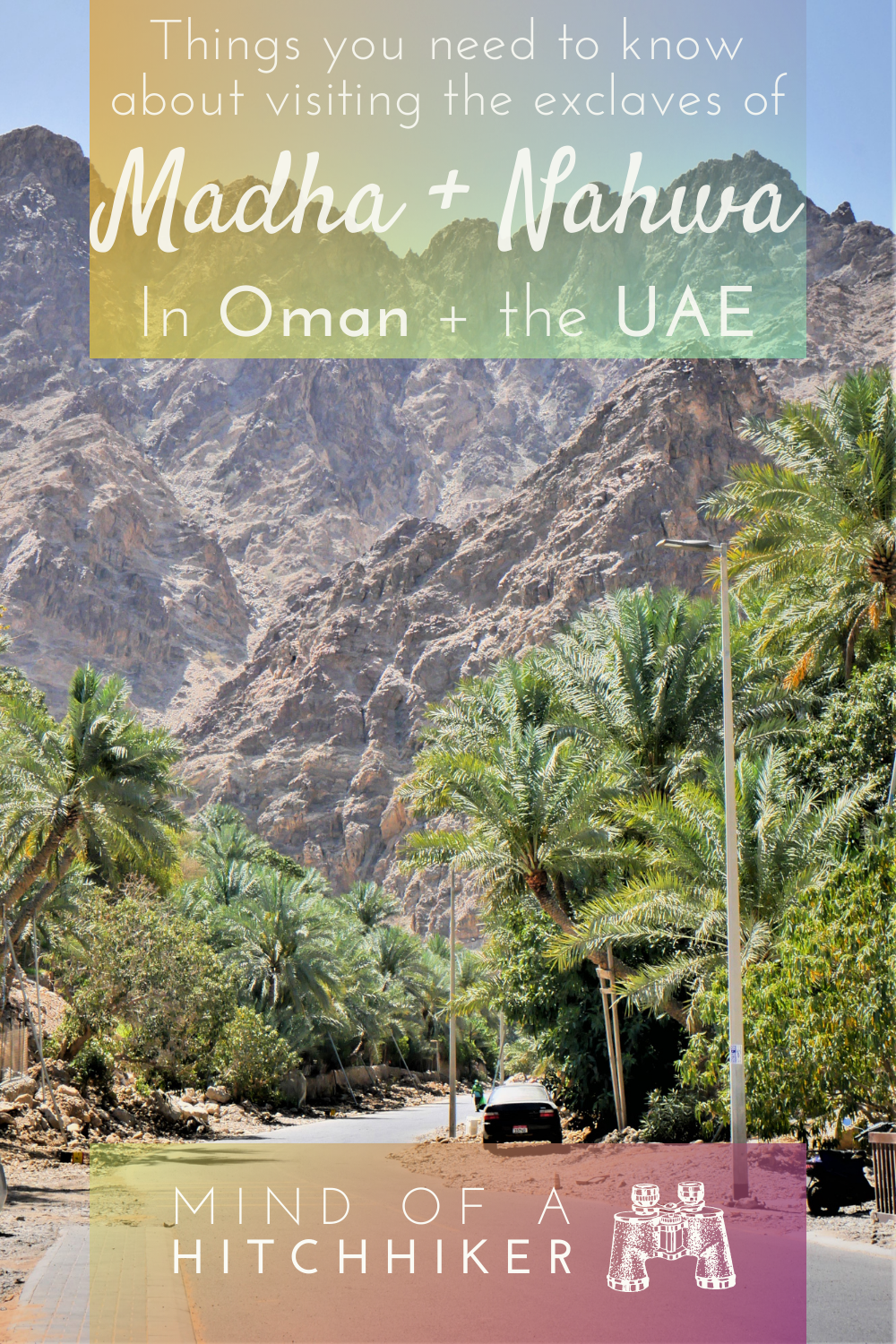
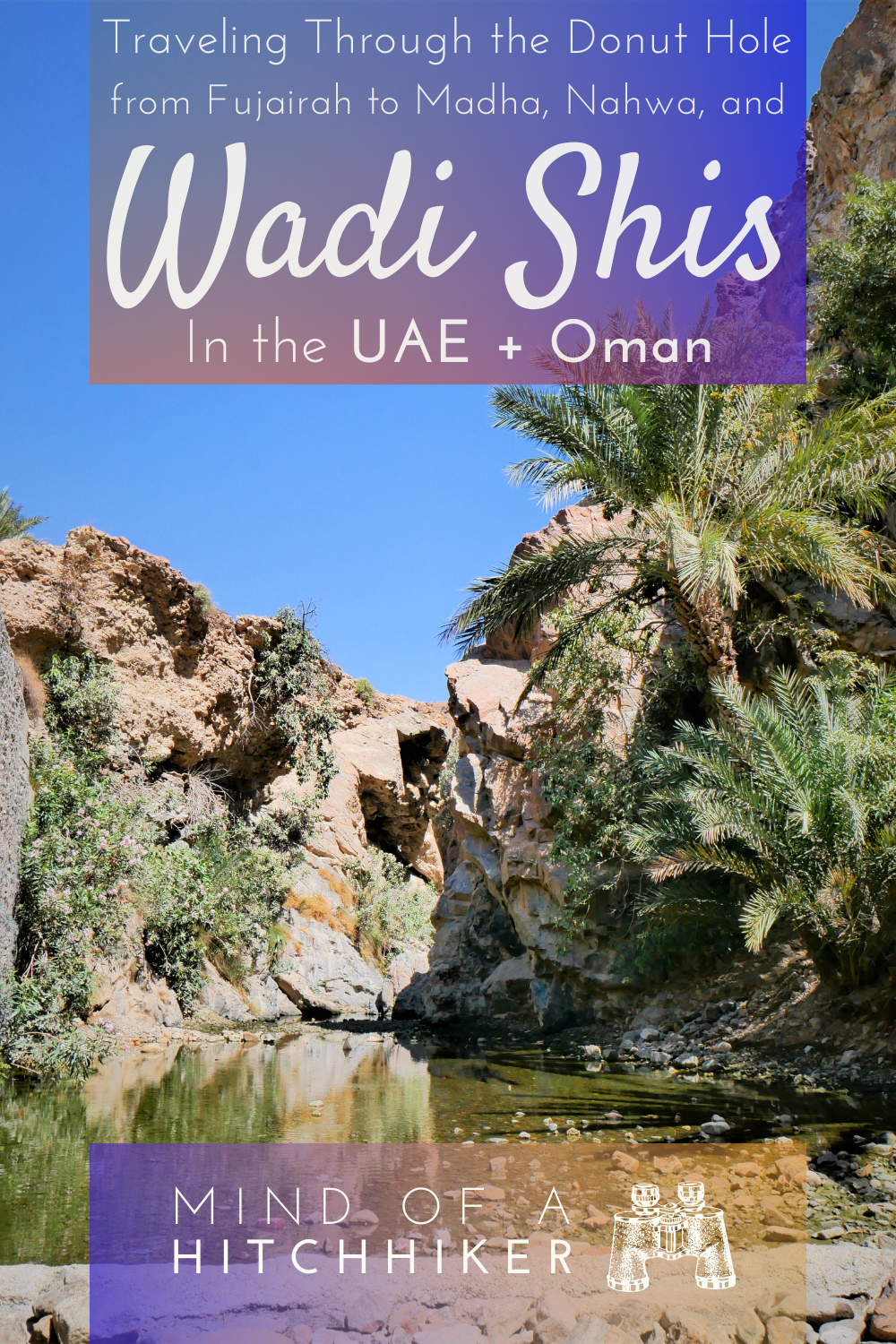
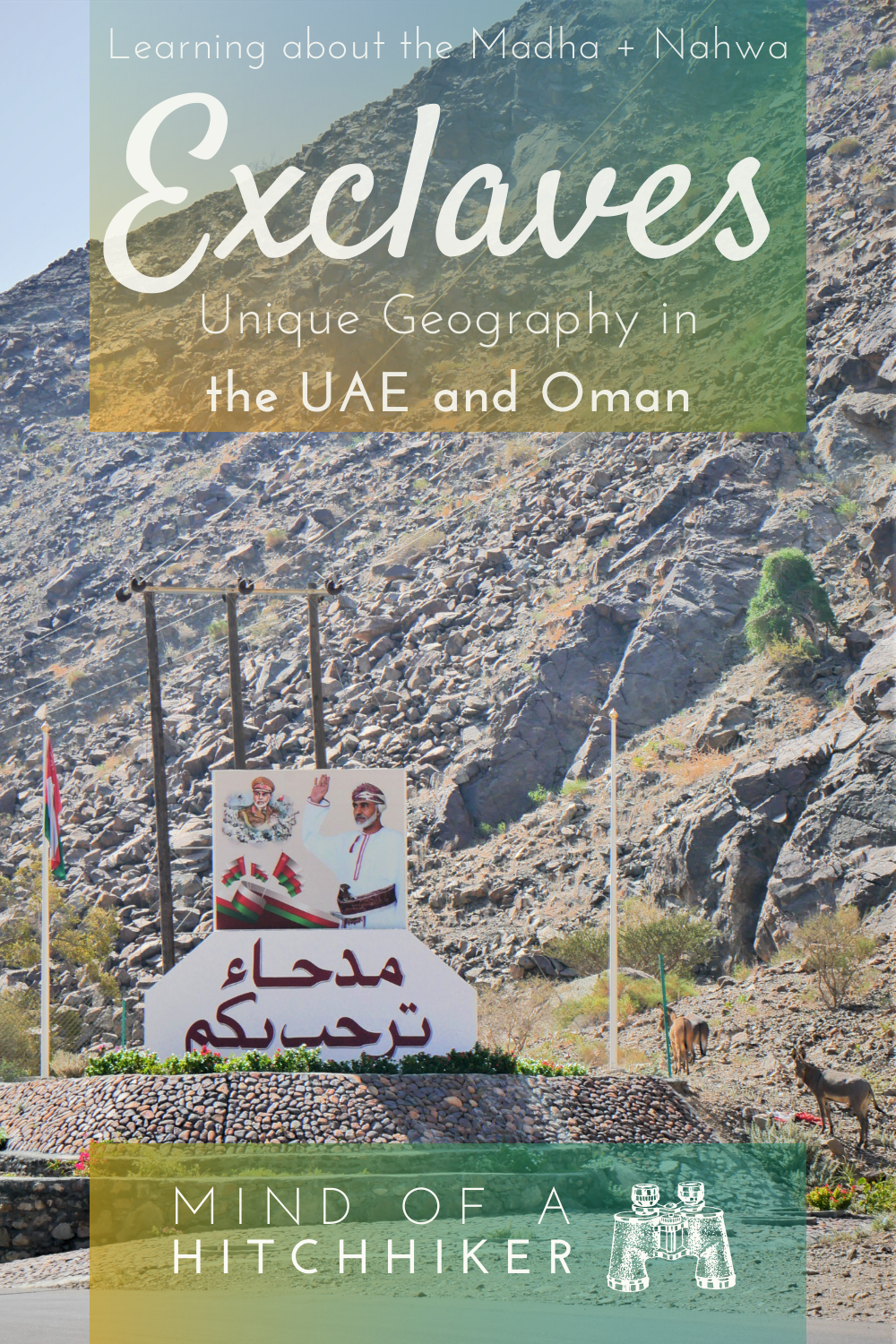
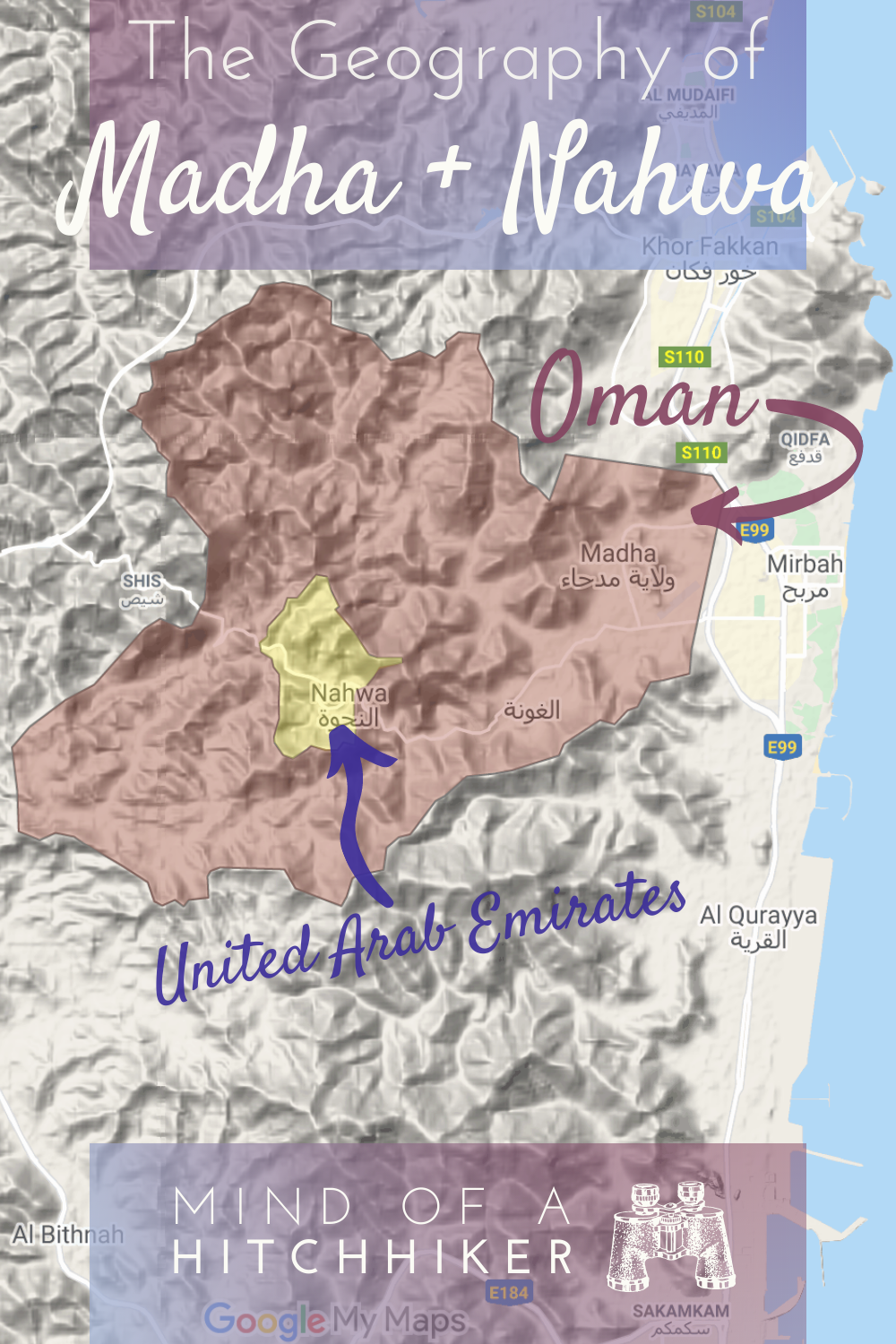

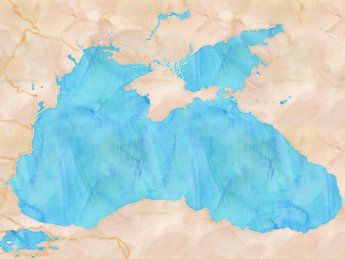

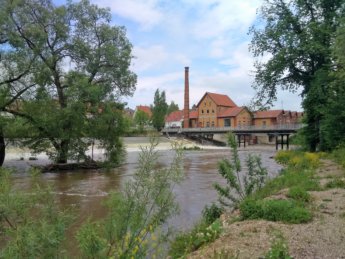

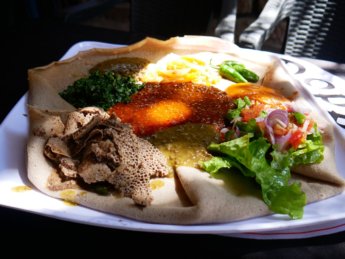
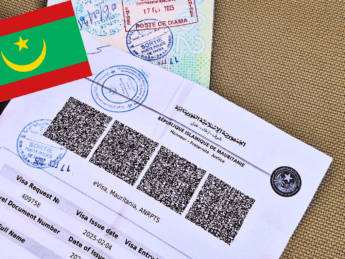
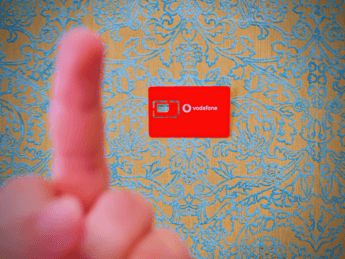
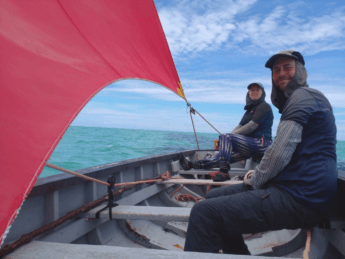
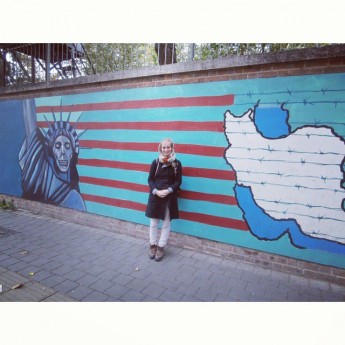

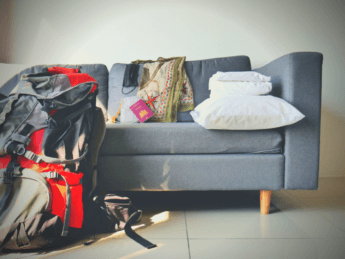


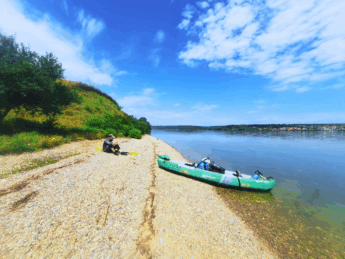
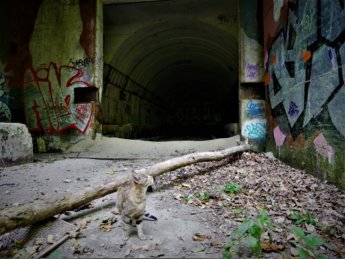
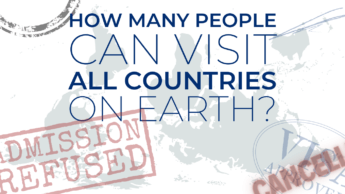
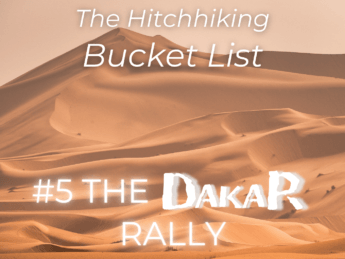
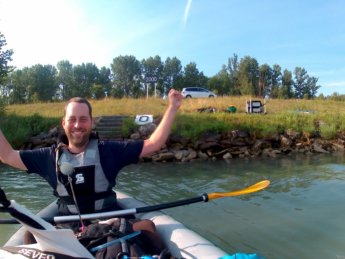
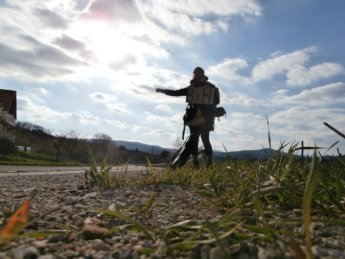
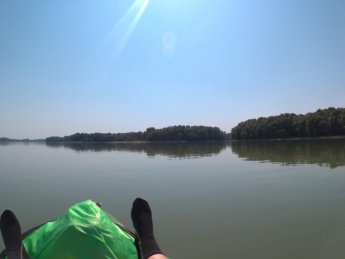

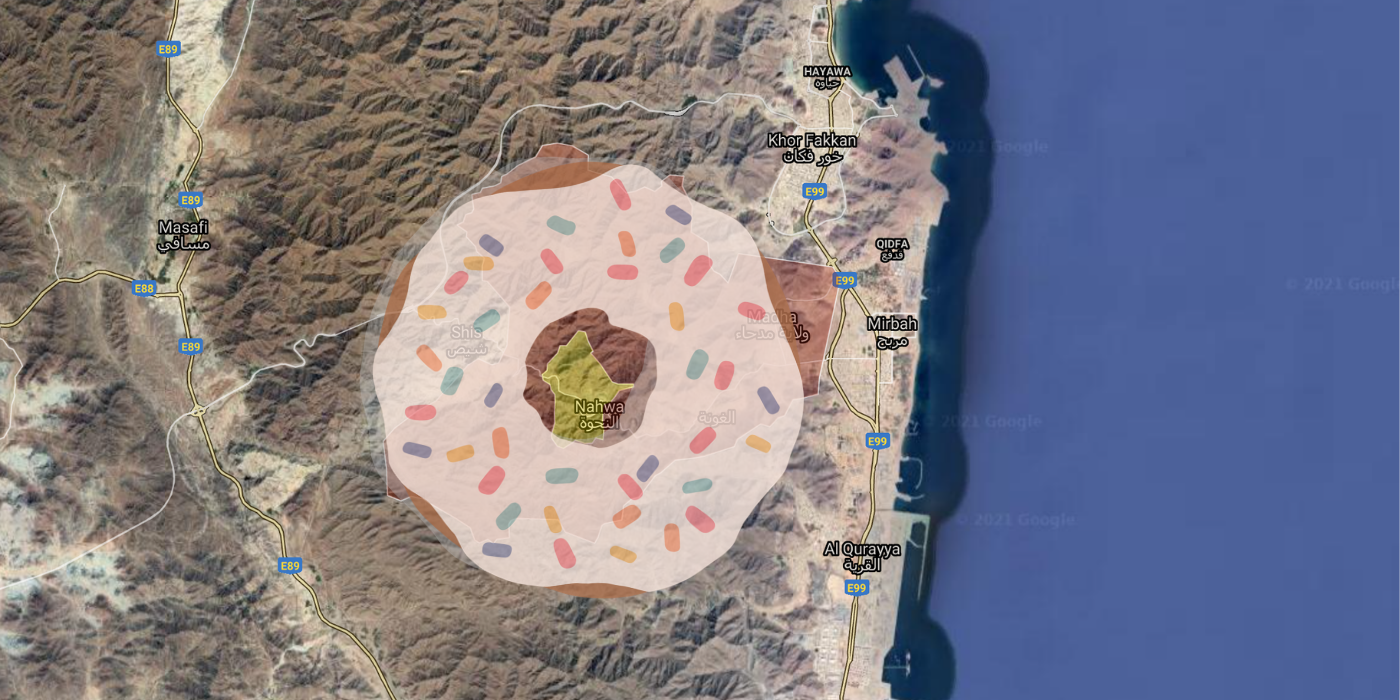
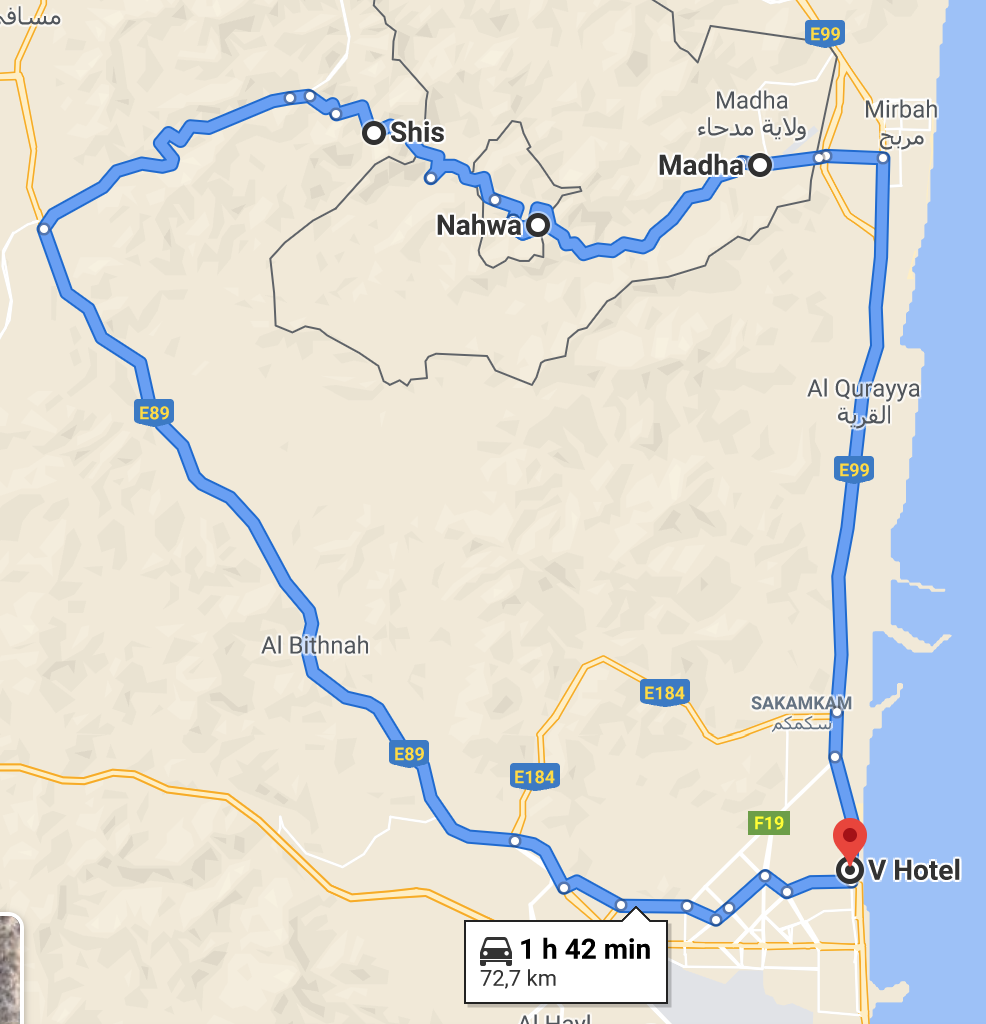
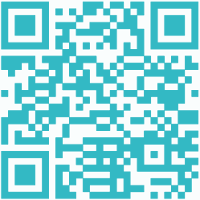
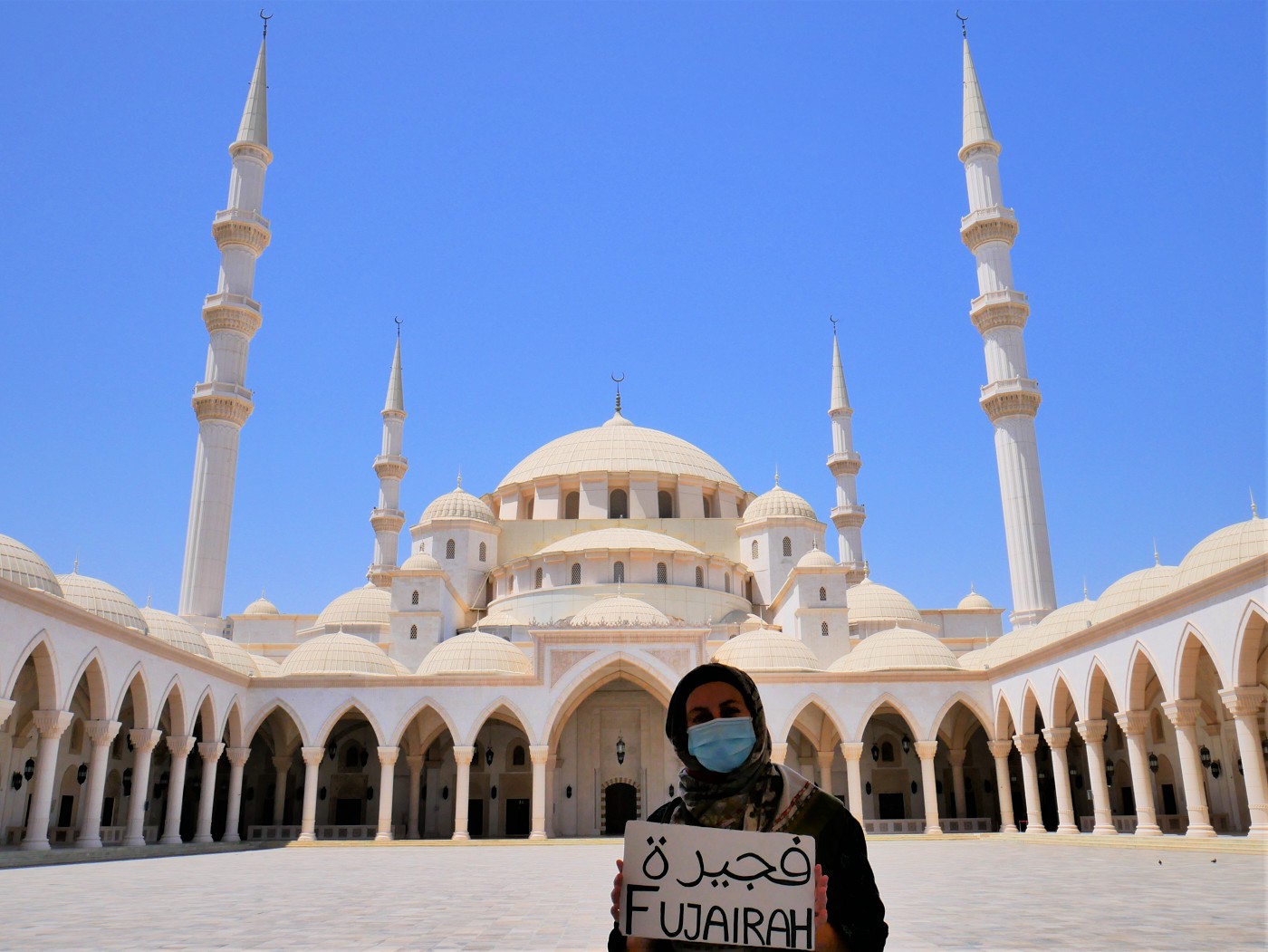
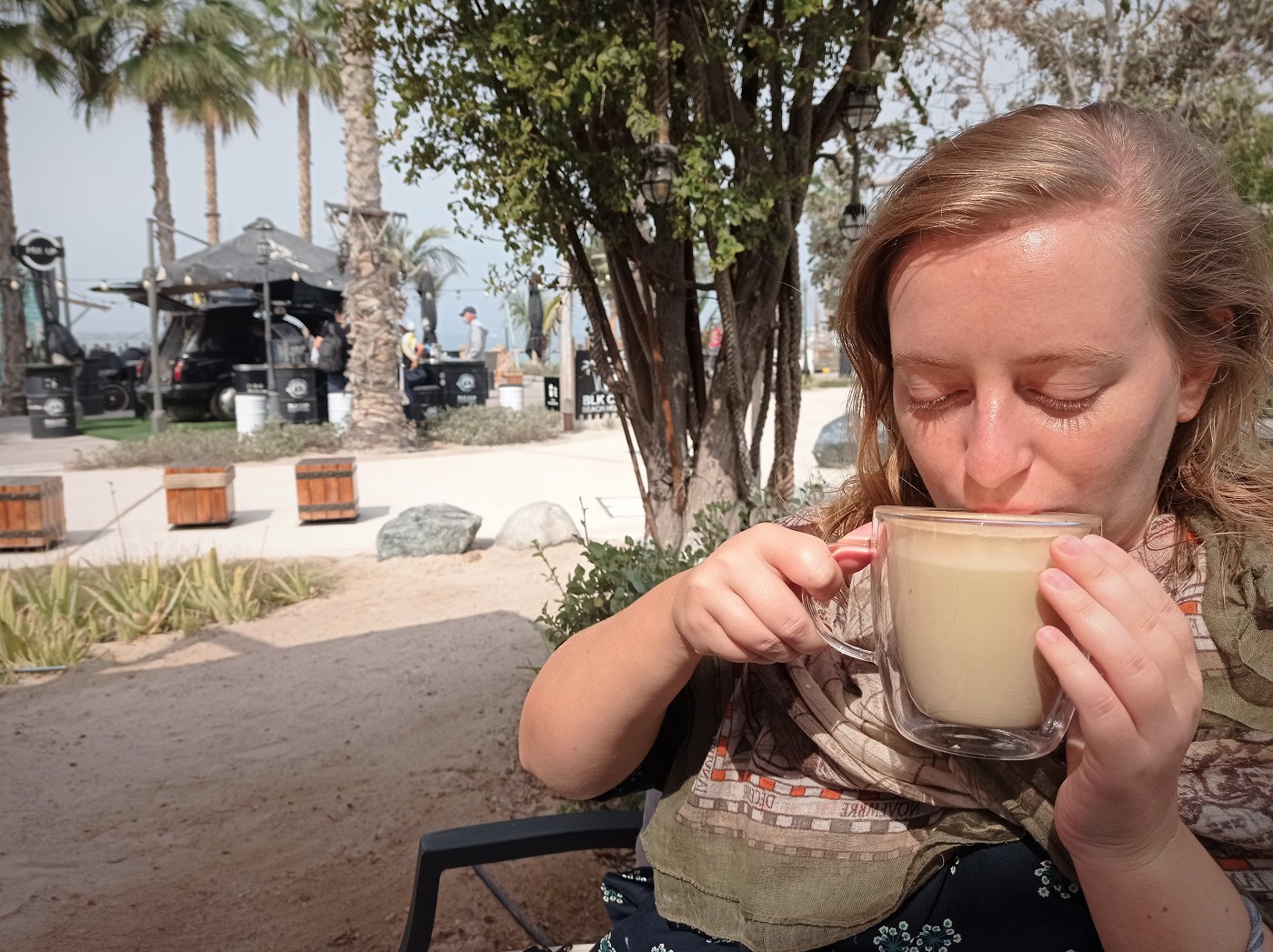
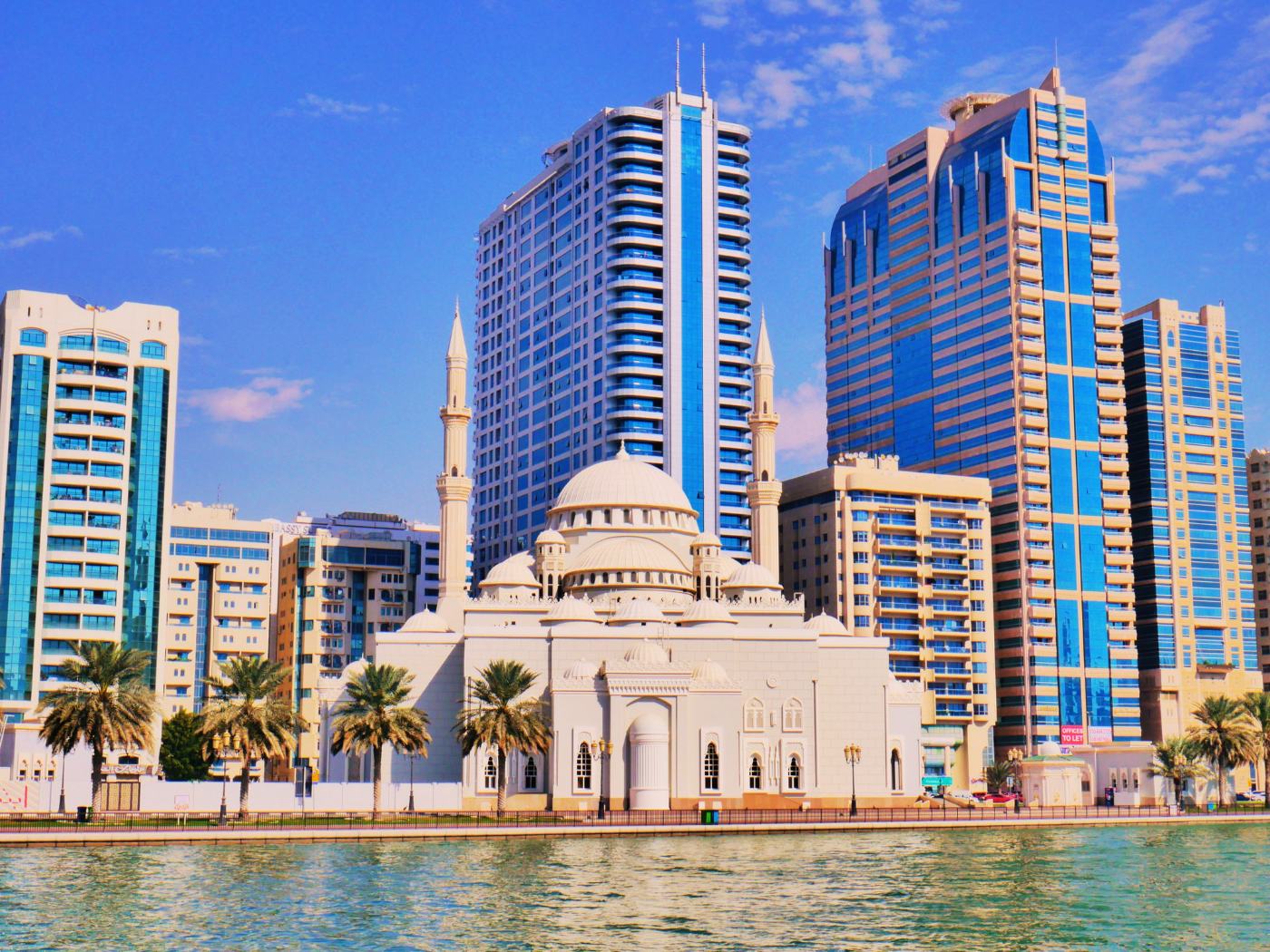

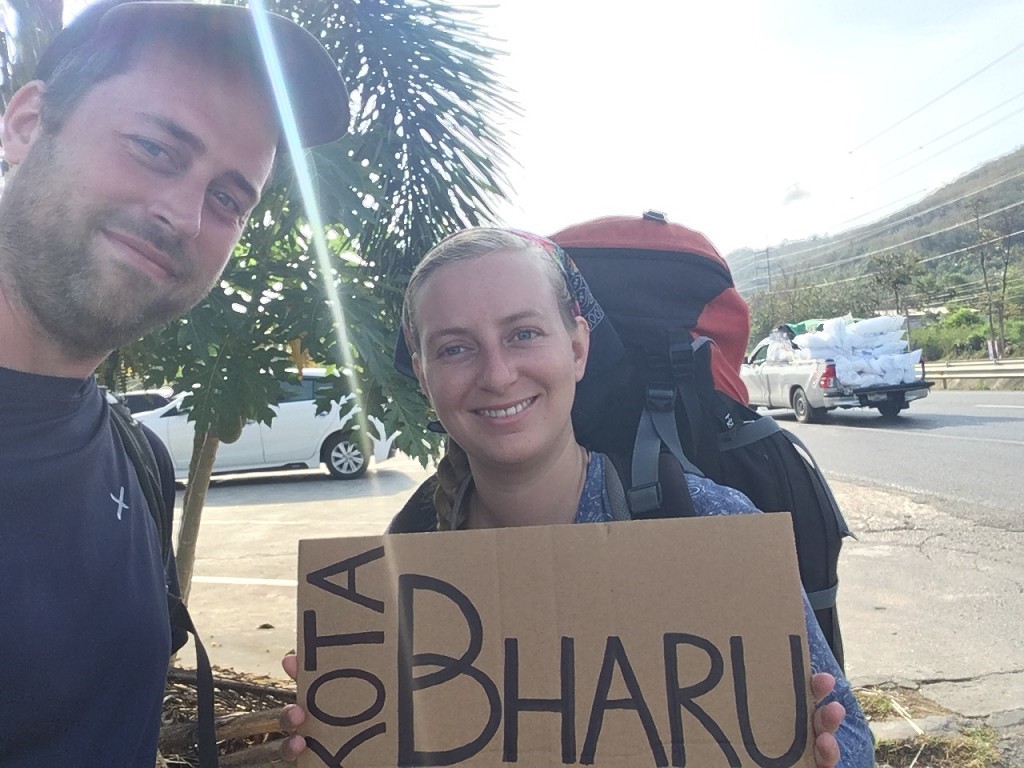
Hoi Iris, leuk verhaal over deze geografische anomalie. Madha en Nawha worden trouwens ook beschreven in het boek “The atlas of unusual borders” van Zoran Nikolic.
Hey Mark! Leuk om jou hier te zien. Dankjewel voor de leestip. In Kirgizië hebben ze ook wat interessante exclaves (zullen vast ook in het boek staan), maar volgens mij zijn ze niet zo toegangkelijk als Madha en Nahwa
Hello from New Jersey, USA. My travel buddy and I are thinking about going to Dubai in October 2021, and renting a car one day to drive to the enclave. So, are you saying in your blog that no customs officials or police checked you when you transited on that road in Oman, on the way to Nahwa? And you could stop freely in Madha to take a few photos without any hassles? If you tell me ‘yes’ to both questions, I’ll be very pleased that I found your info online!
Yes and yes. There were absolutely no checks. Besides two cops in Madha who didn’t even leave their cars to get coffee, we didn’t even see any uniforms
Hi Spencer, Ensure your car has valid Oman vehicle insurance also apart from UAE. You can buy a policy related to Oman territory valid for a week also.
Hello Iris , I visited Madha and Nahwa a couple of times before Covid-19. Your post took my memories back to my exciting journeys within Madha and Nahwa. Thanks a lot for sharing your experiences.
Thank you Khalid for sharing this! 😀 So cool you went there multiple times already. I hope when things normalize a little with the covid and you’re back in the UAE you get to visit again
Thanks Iris for your reply. Actually I am a resident of UAE but had never travelled to Madha and Nahwa. Travelling there took me to an entirely new domain far from the busy life of UAE. I was not sure whether we can still visit Madha during covid ,but your post shows that with proper covid protocol you have been able to.
How much did yall pay for the driver? Love this post! Thanks for all the information.
Hi Benjamin, in the end, the taxi meter was at AED 200 and we paid AED 220 (~50€). About one-quarter of the AED 200 is waiting and letting the meter run. Happy you liked the post